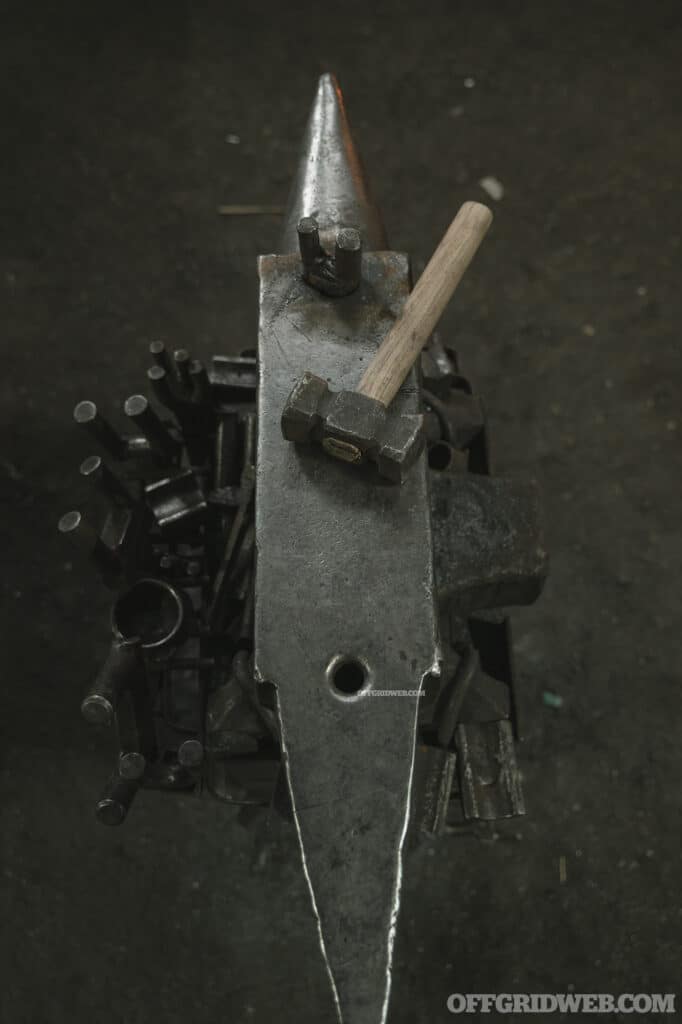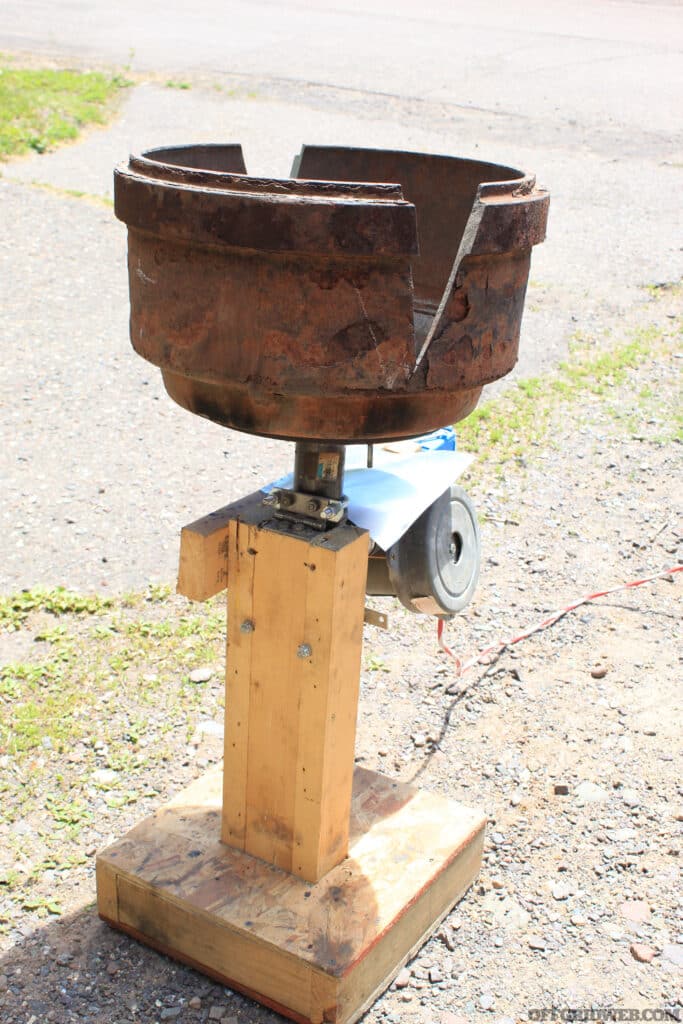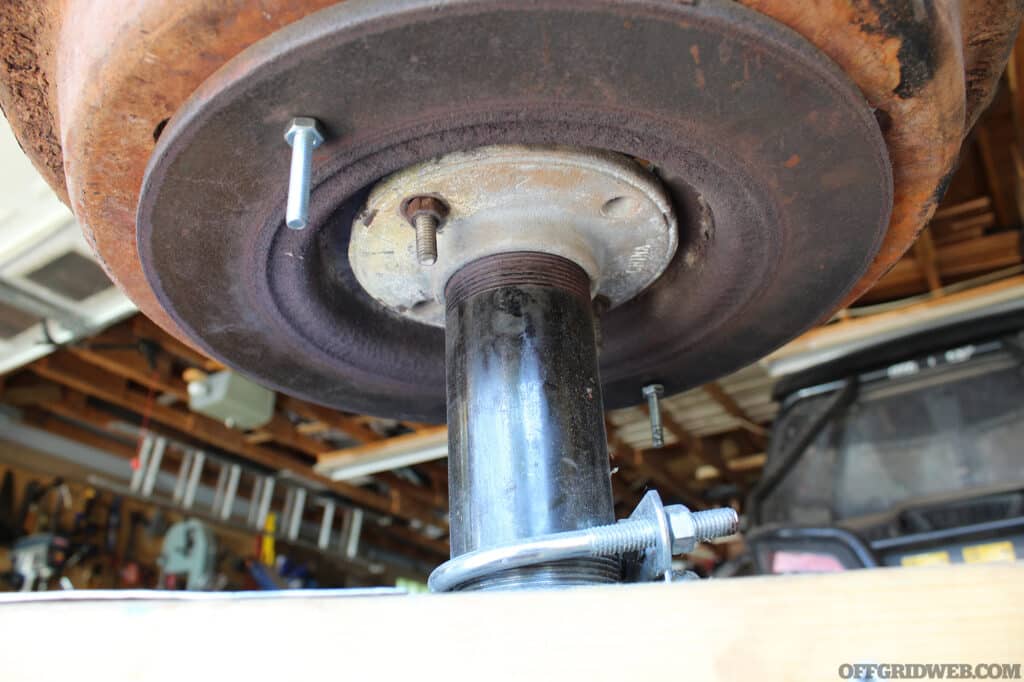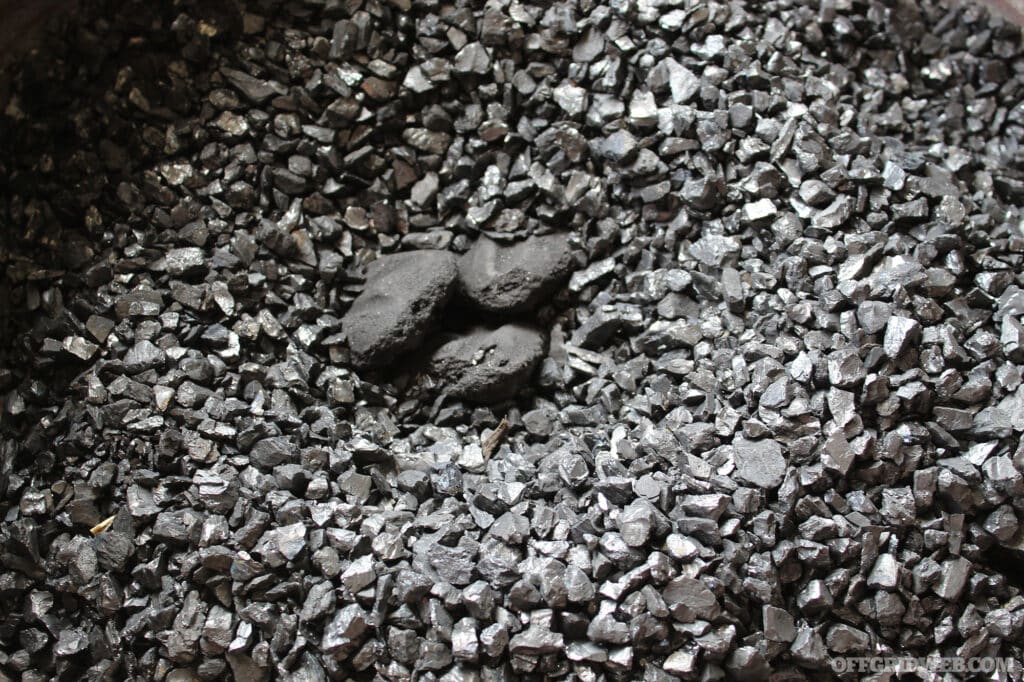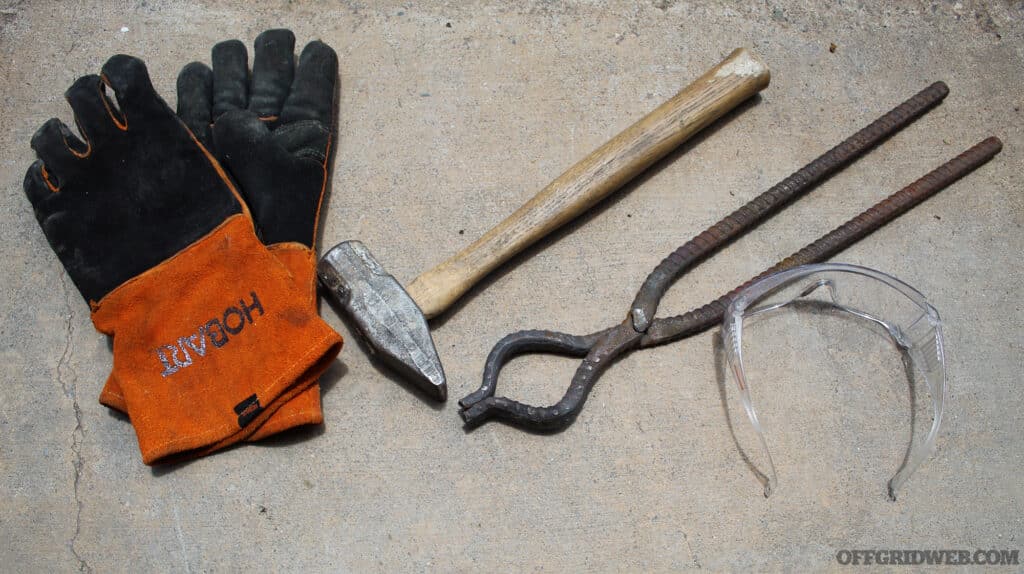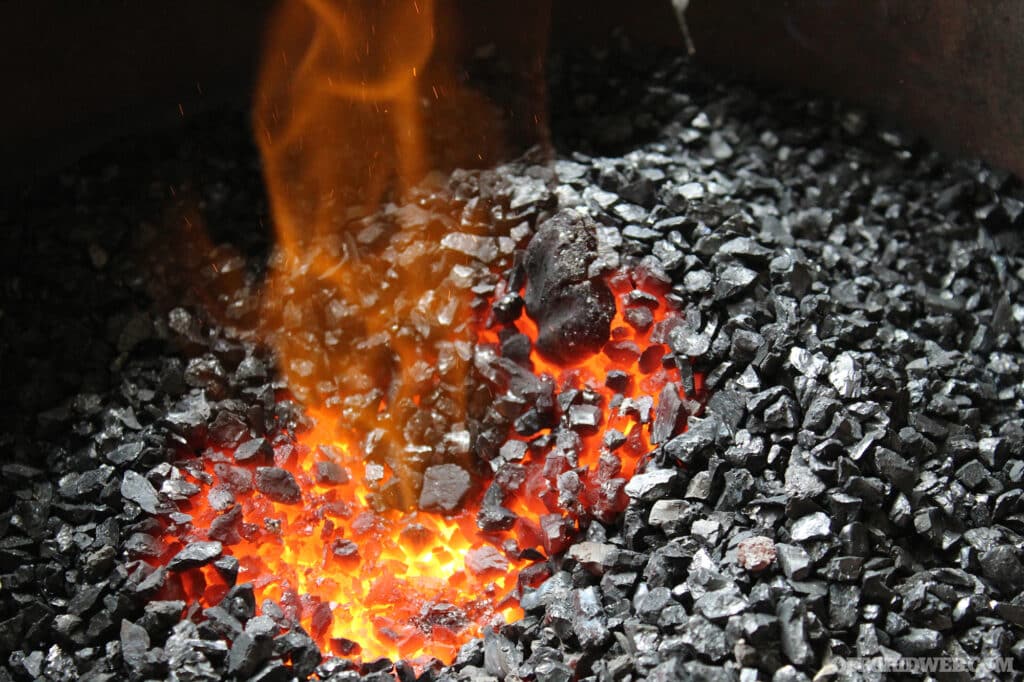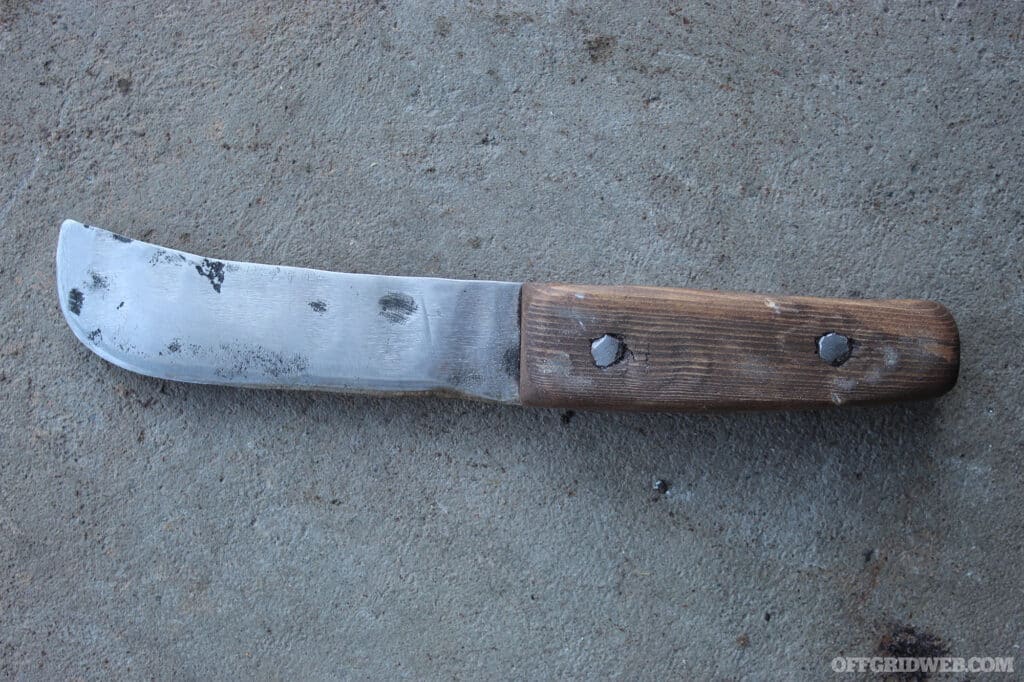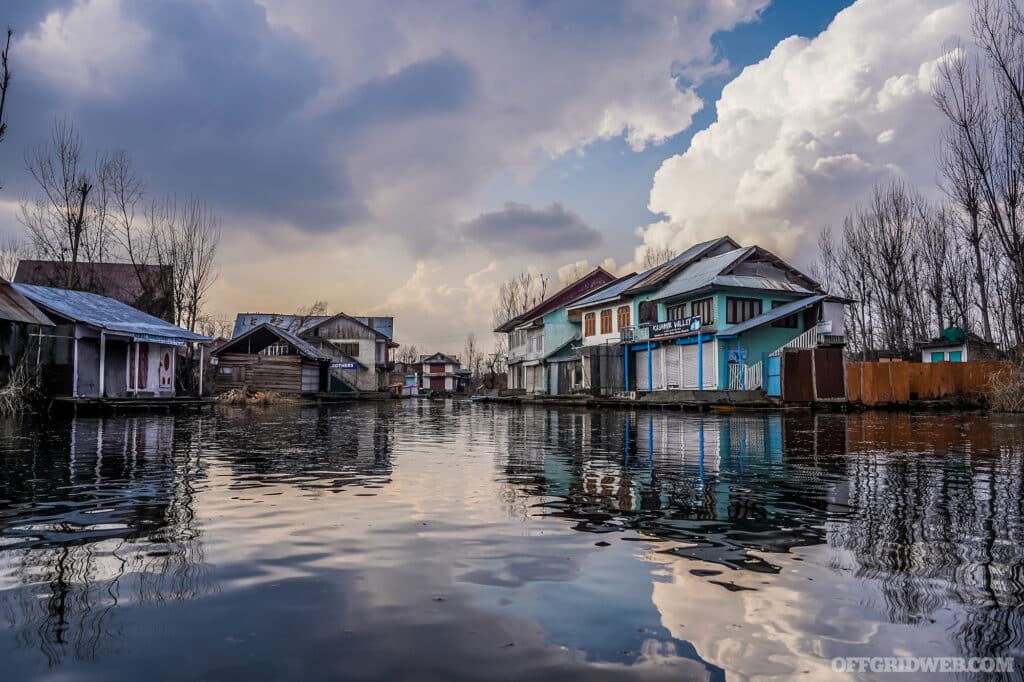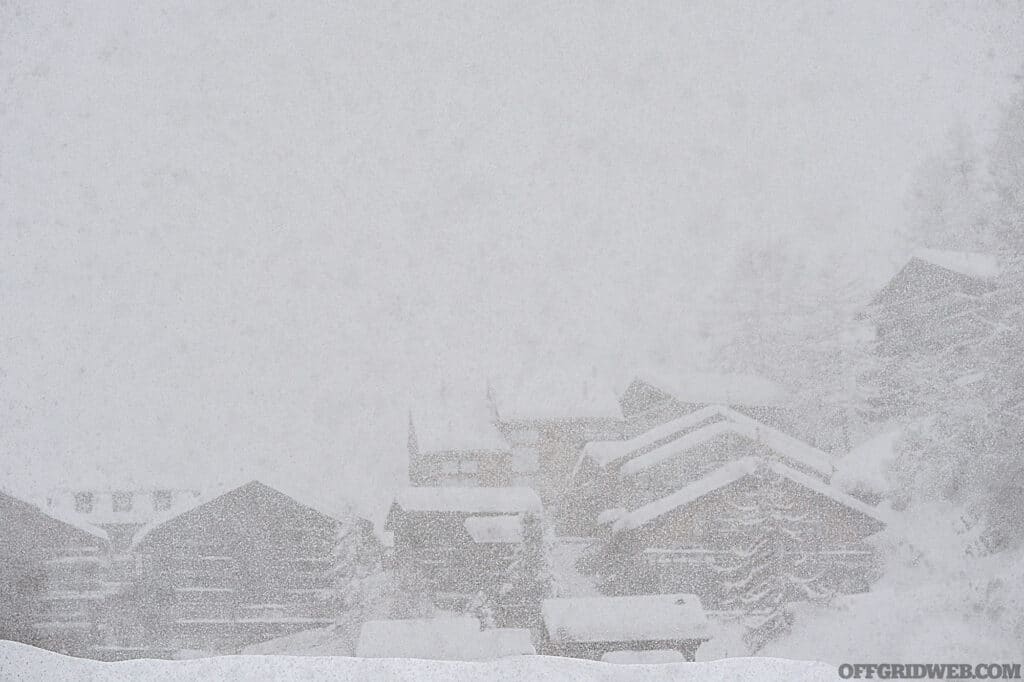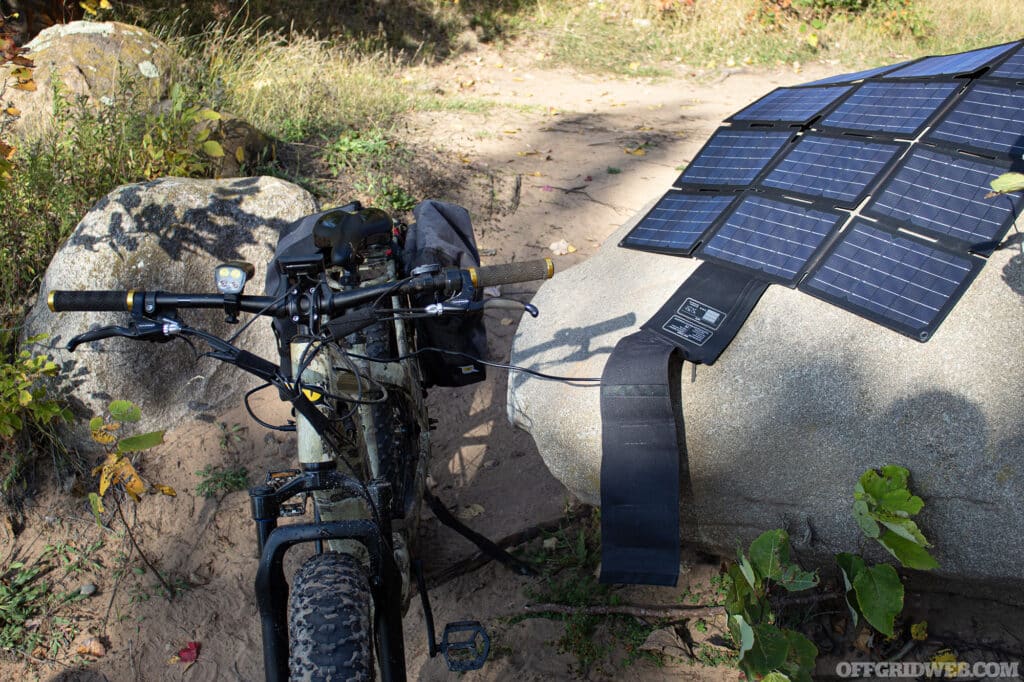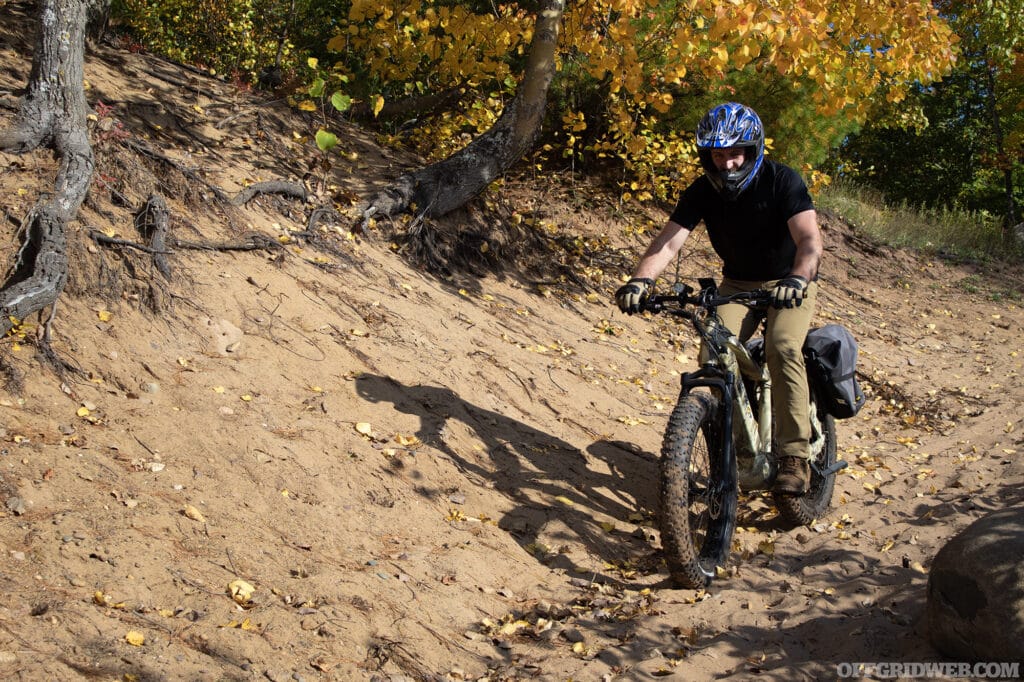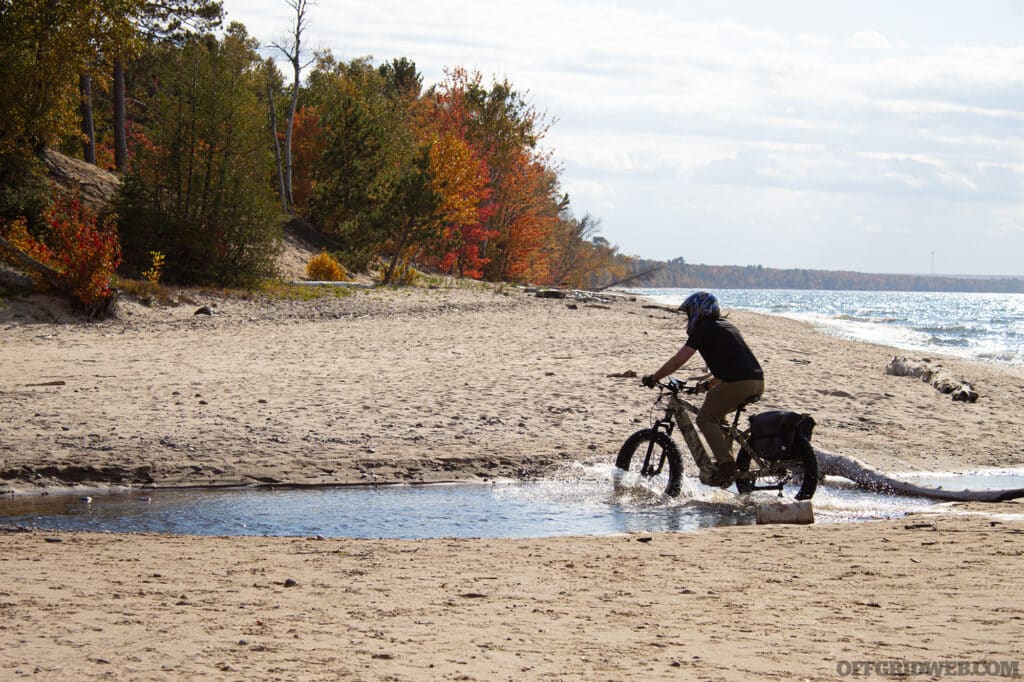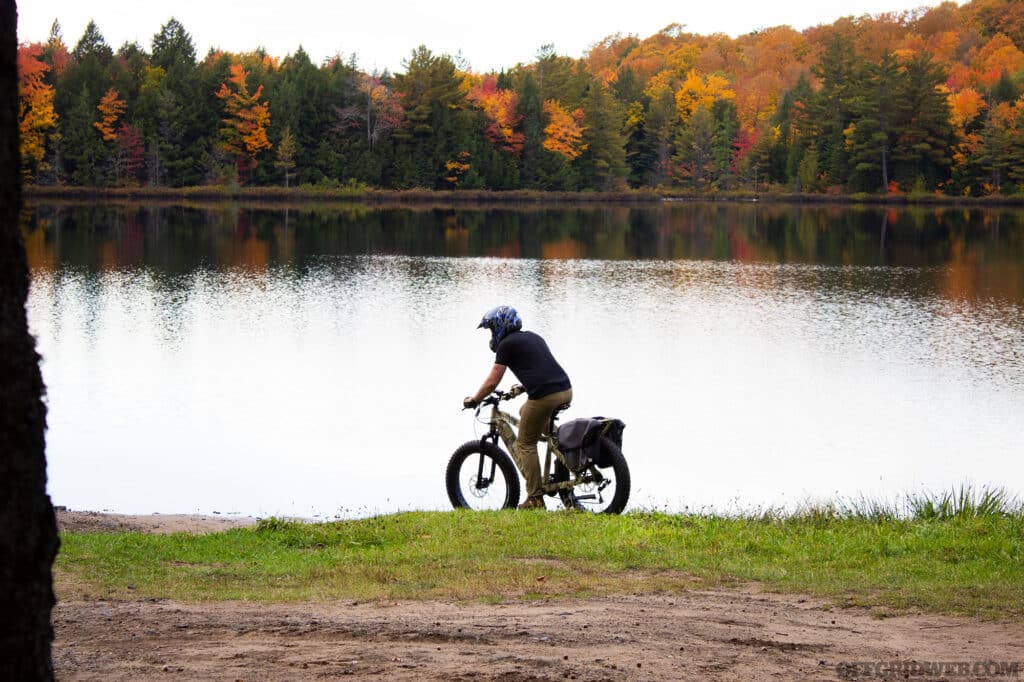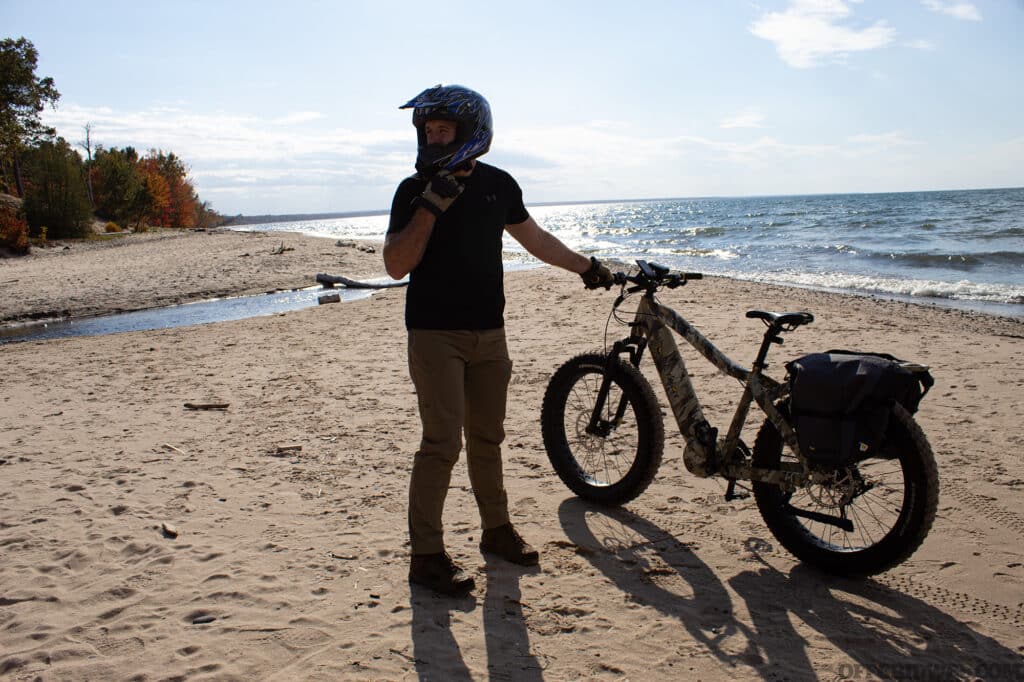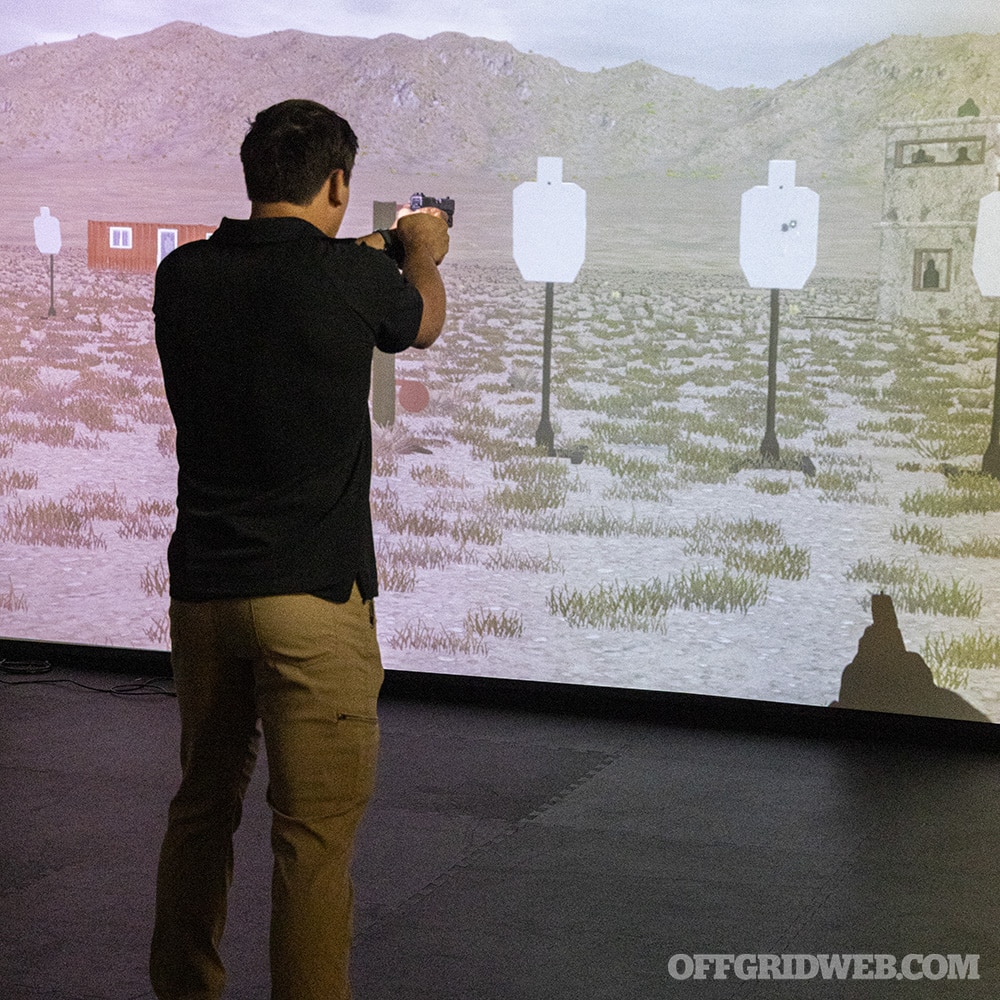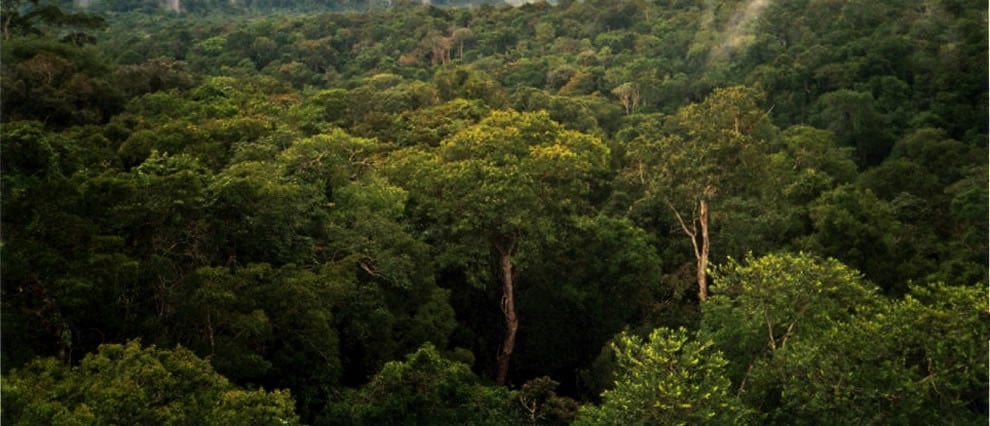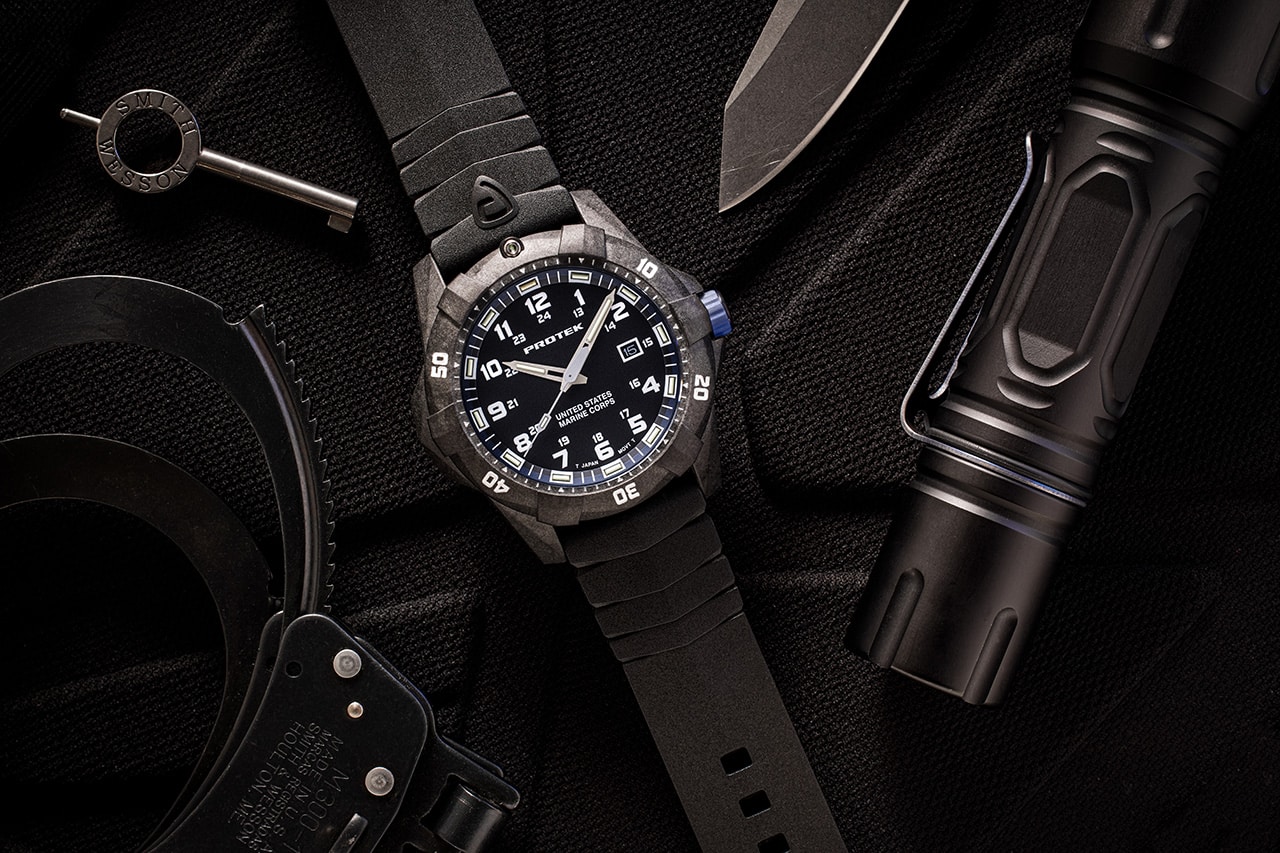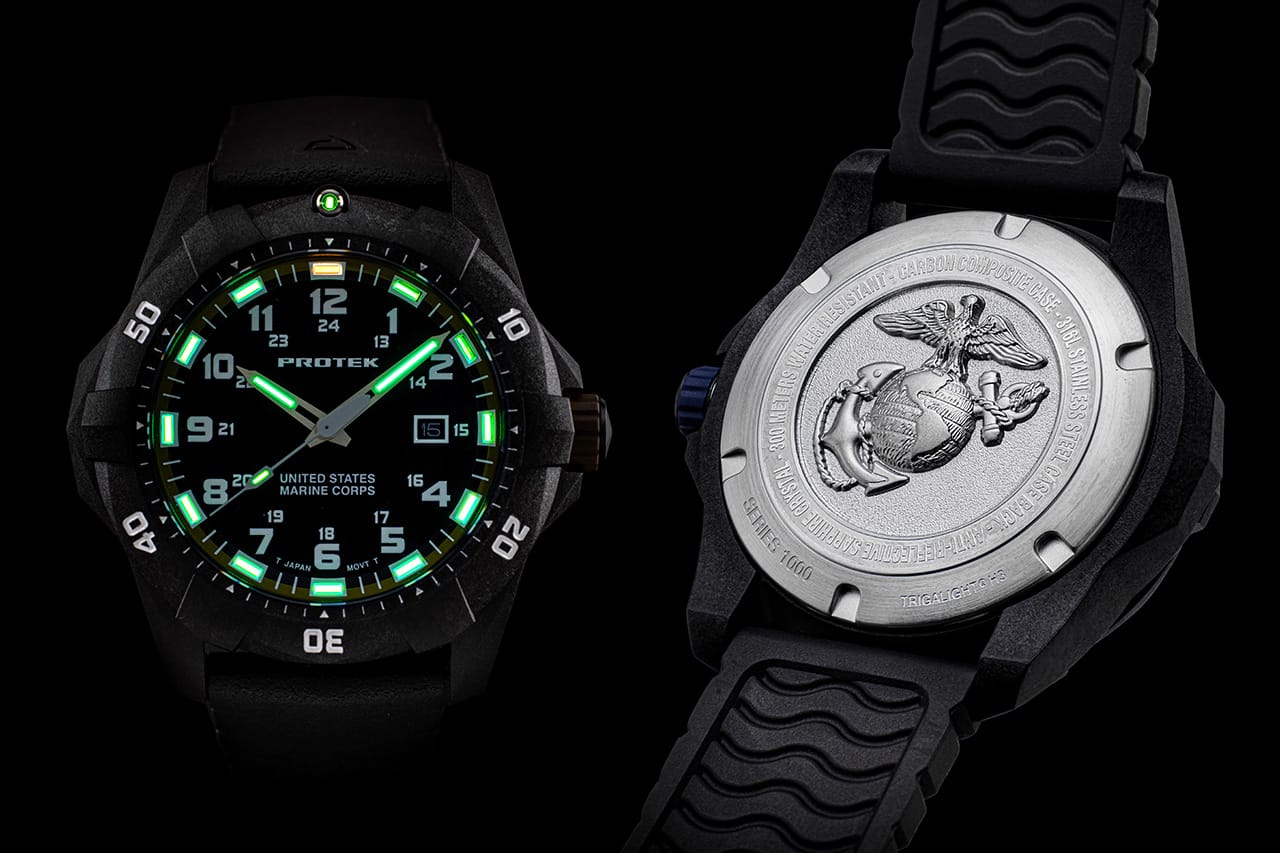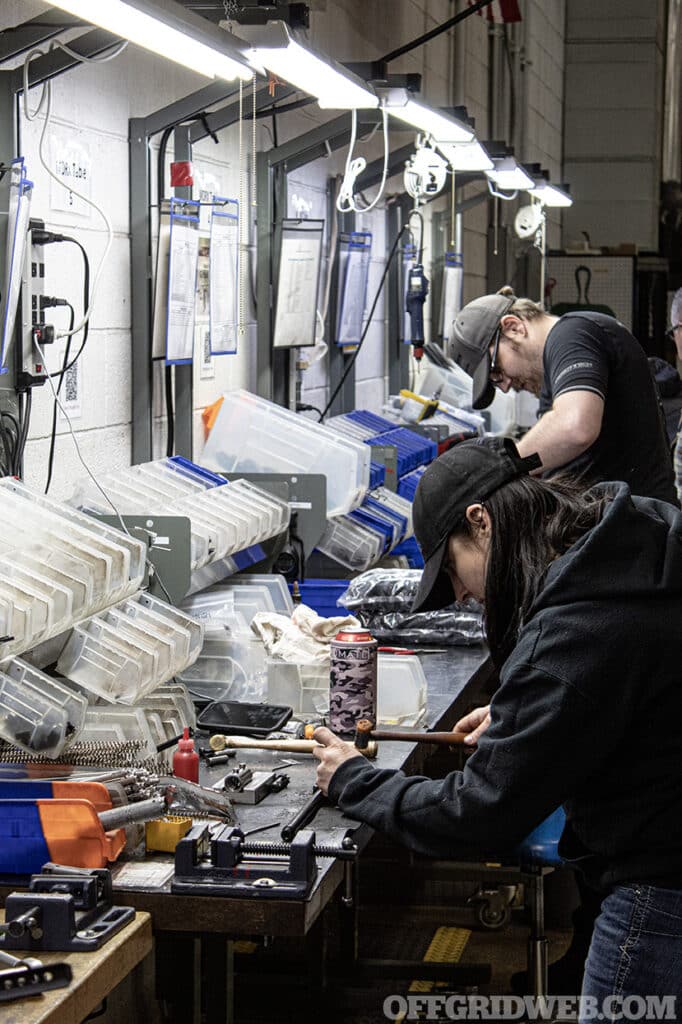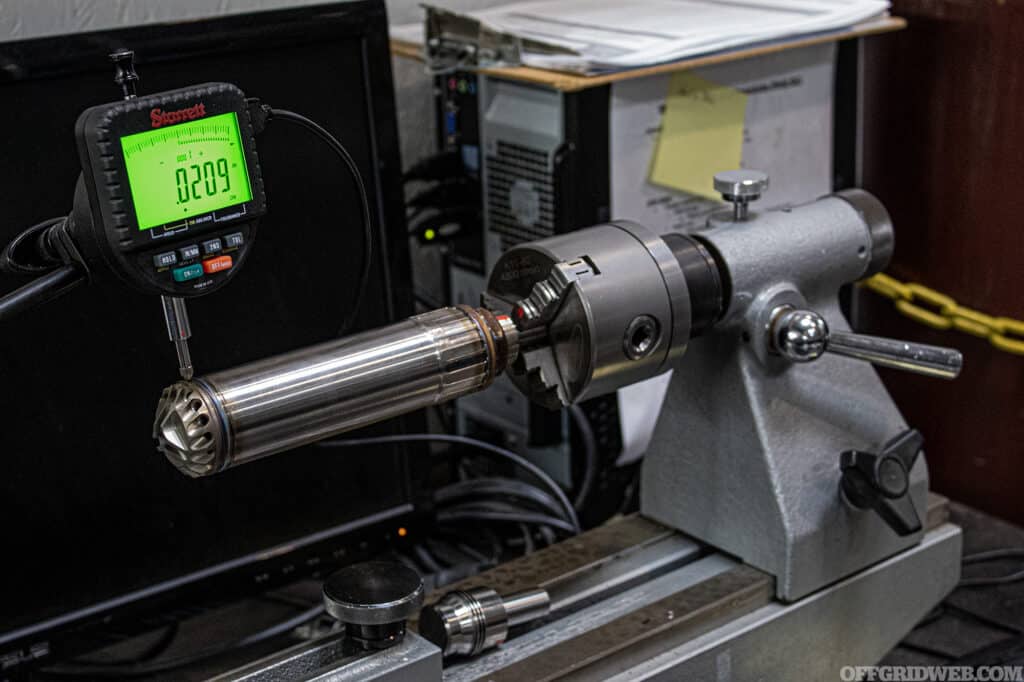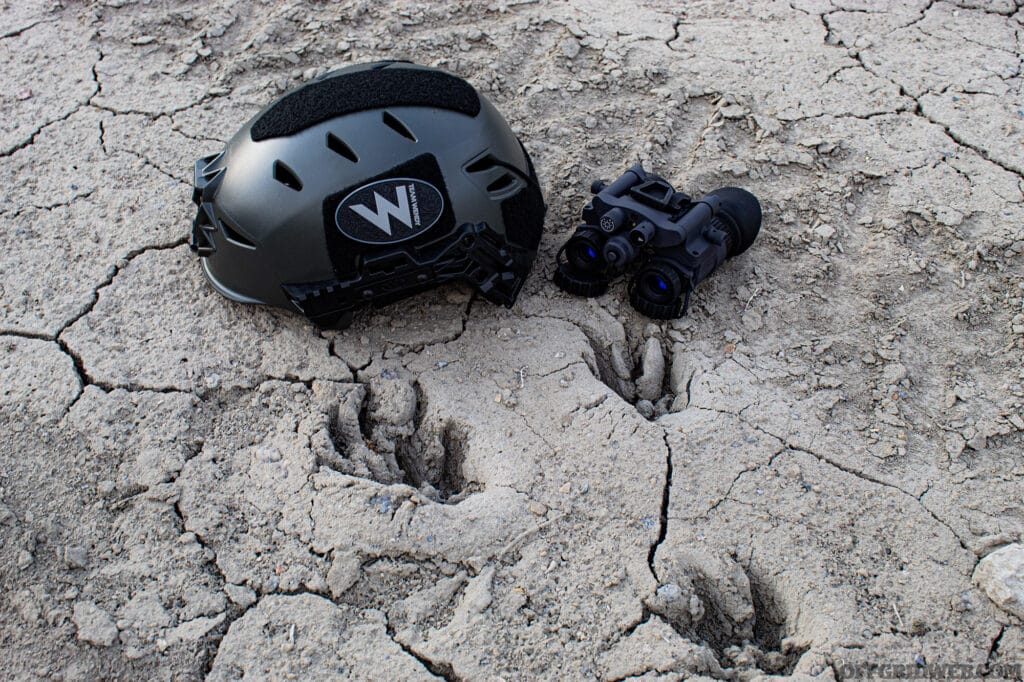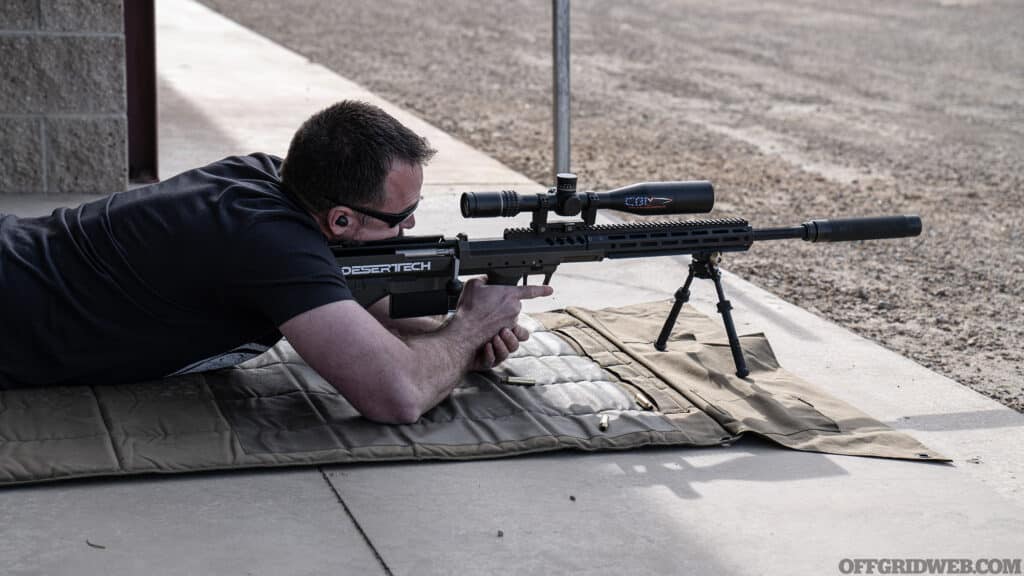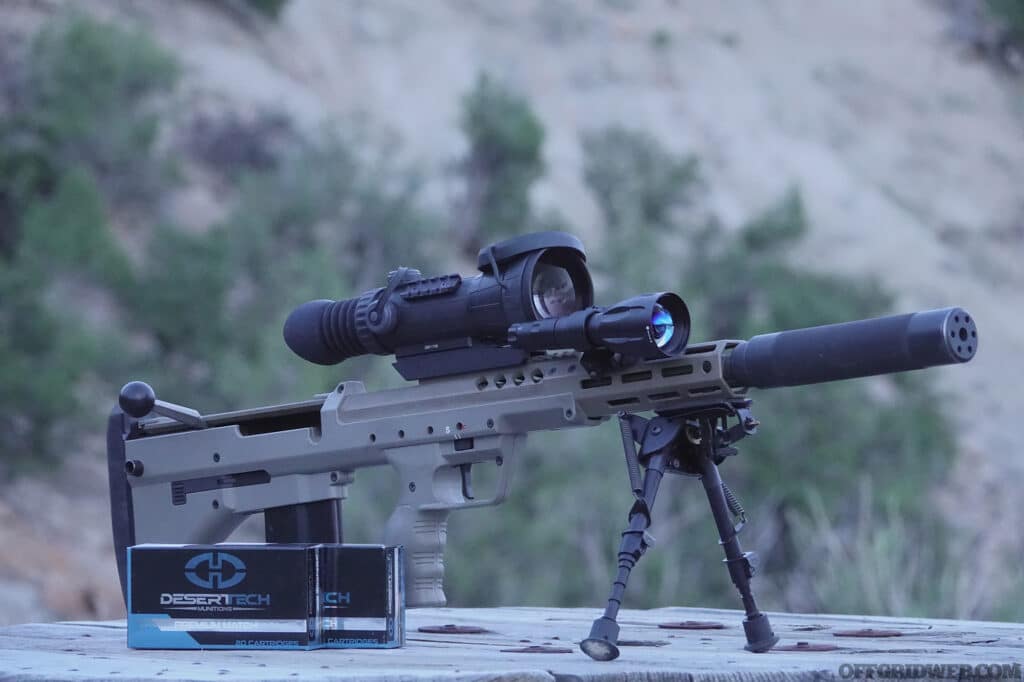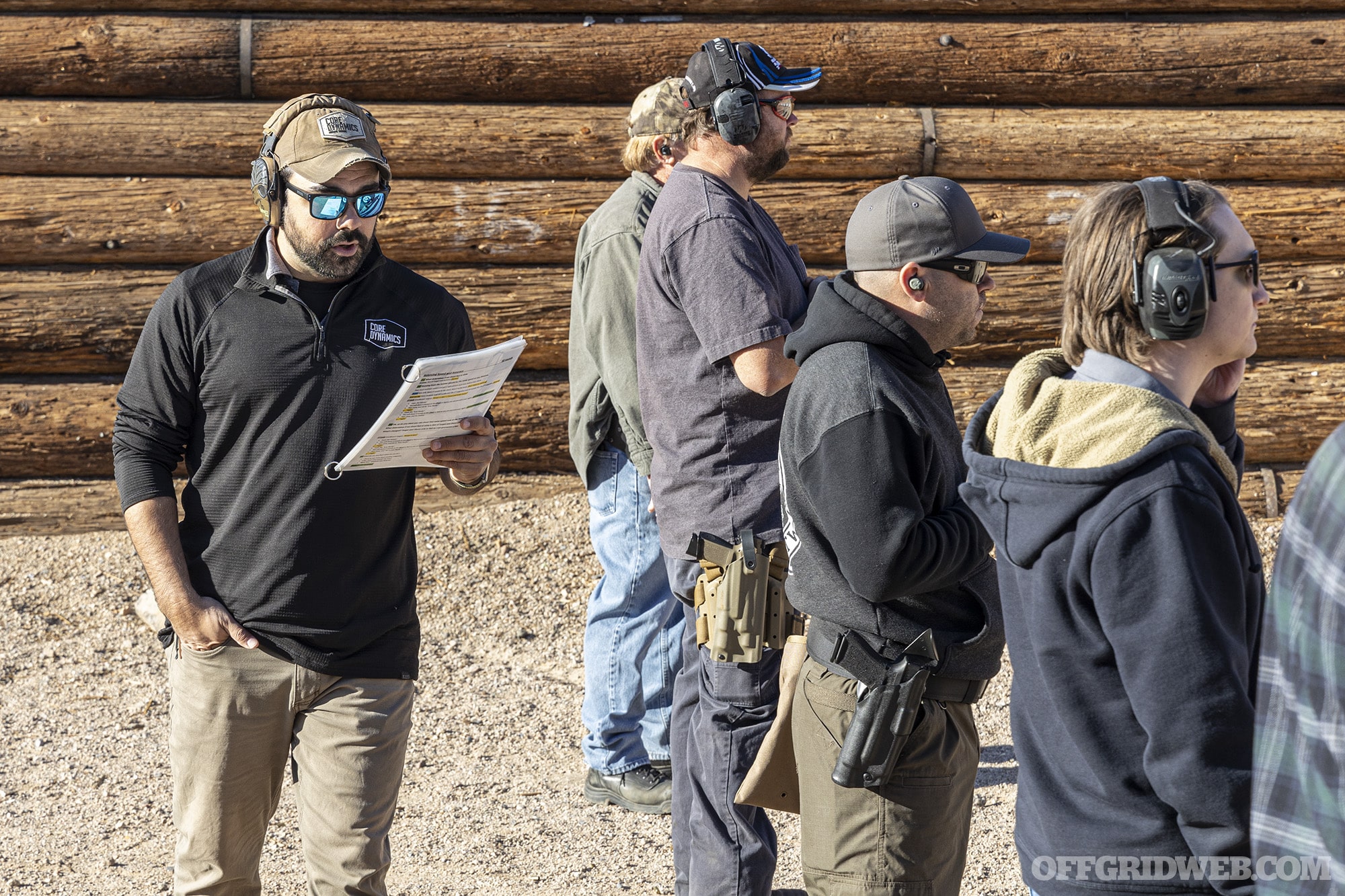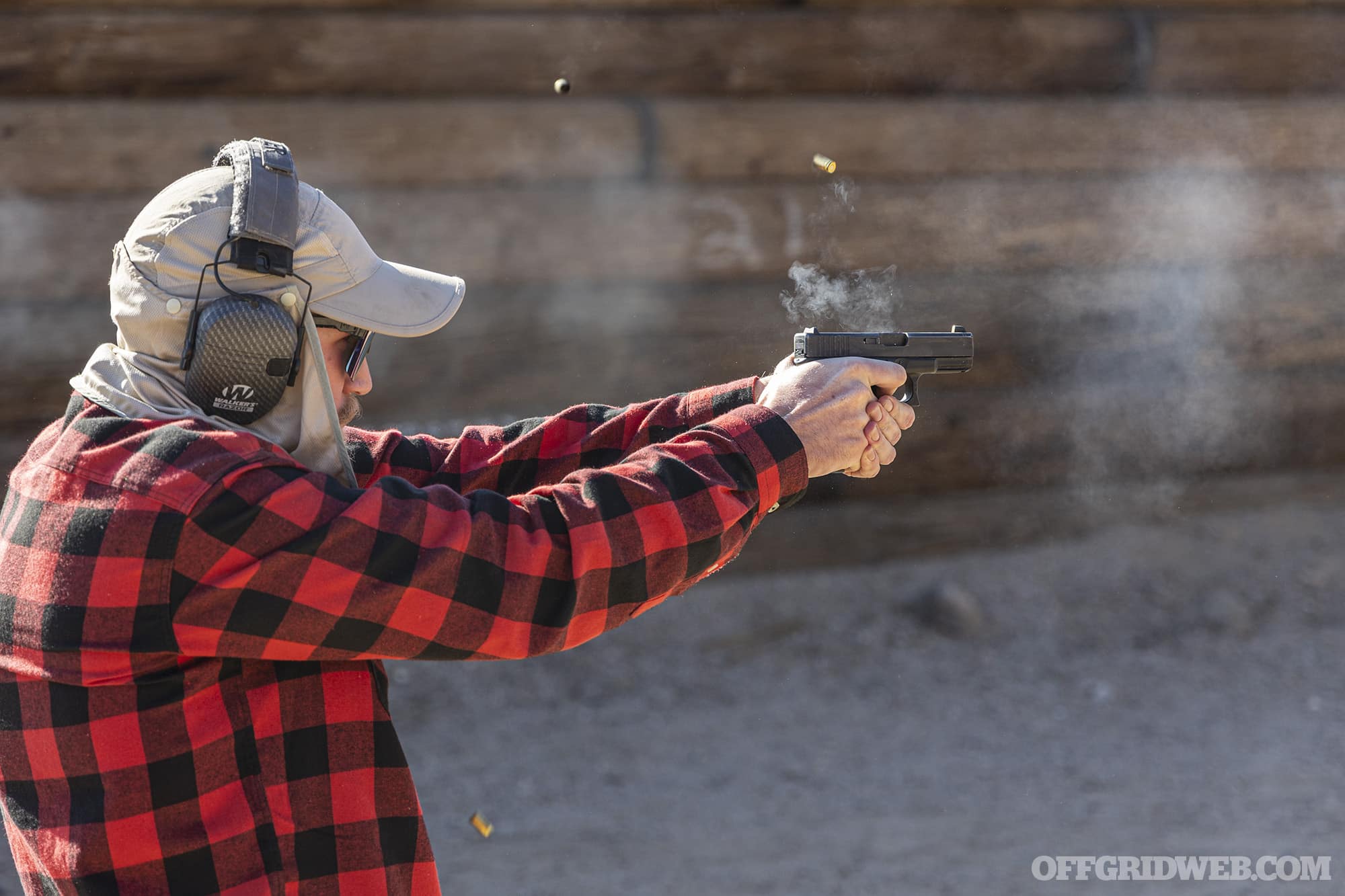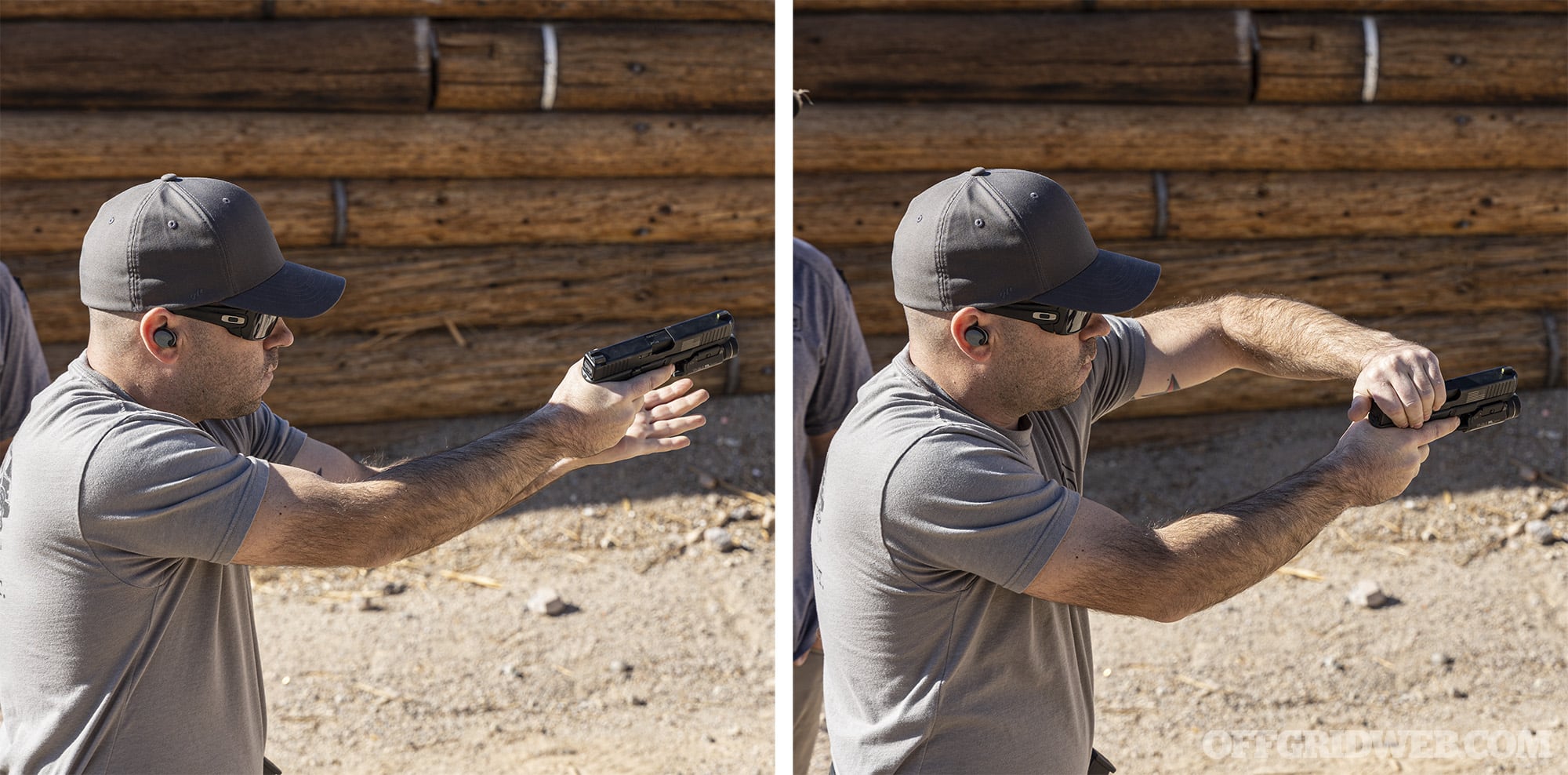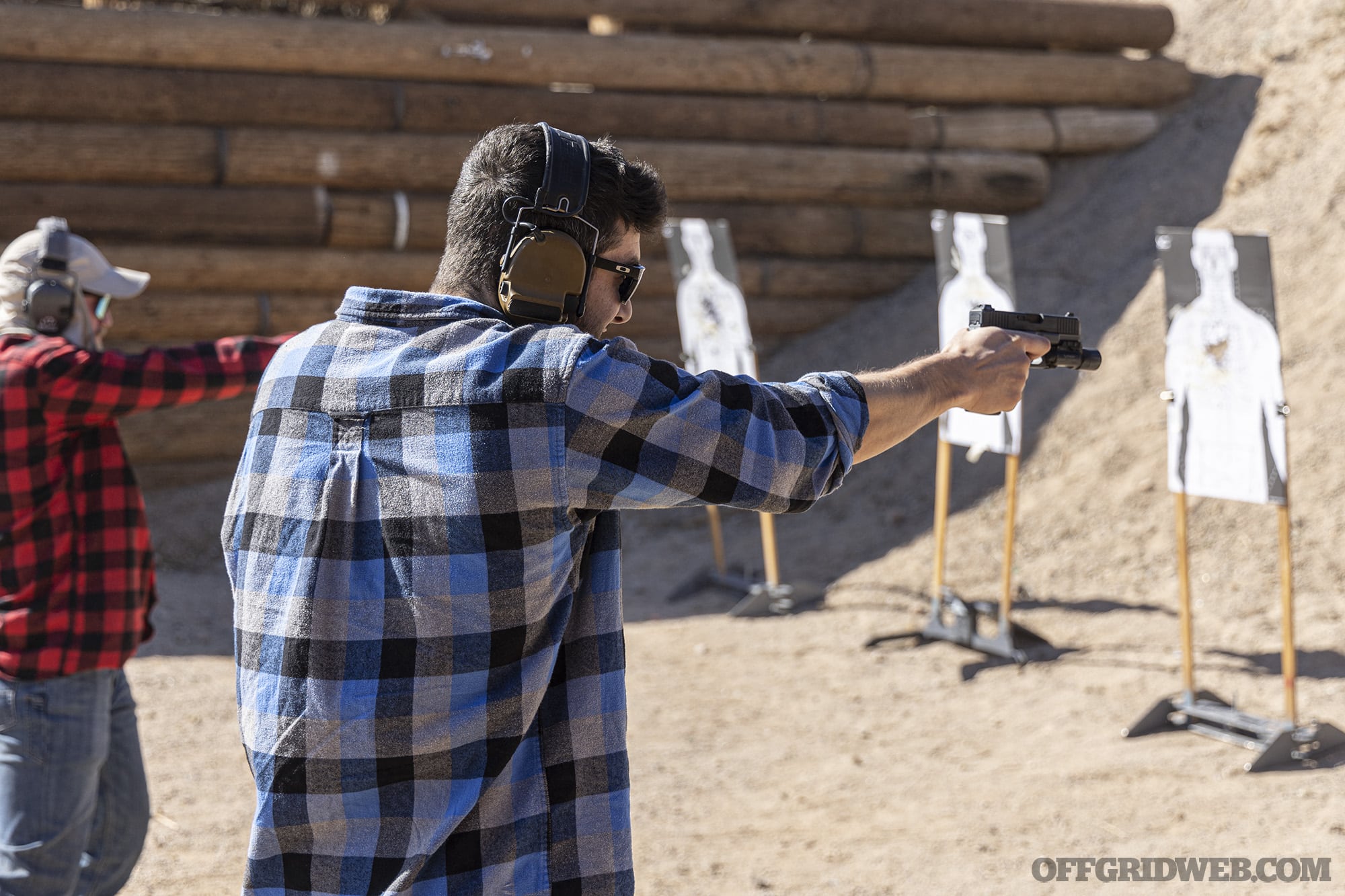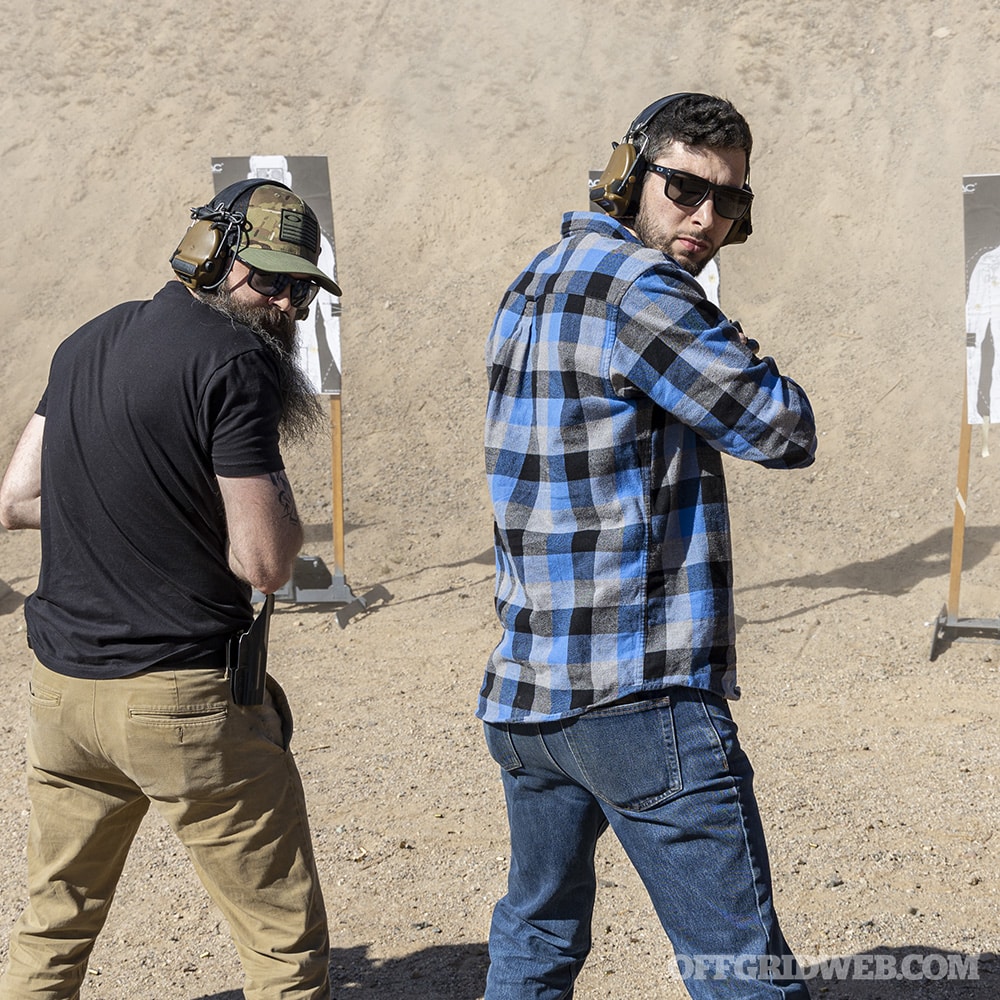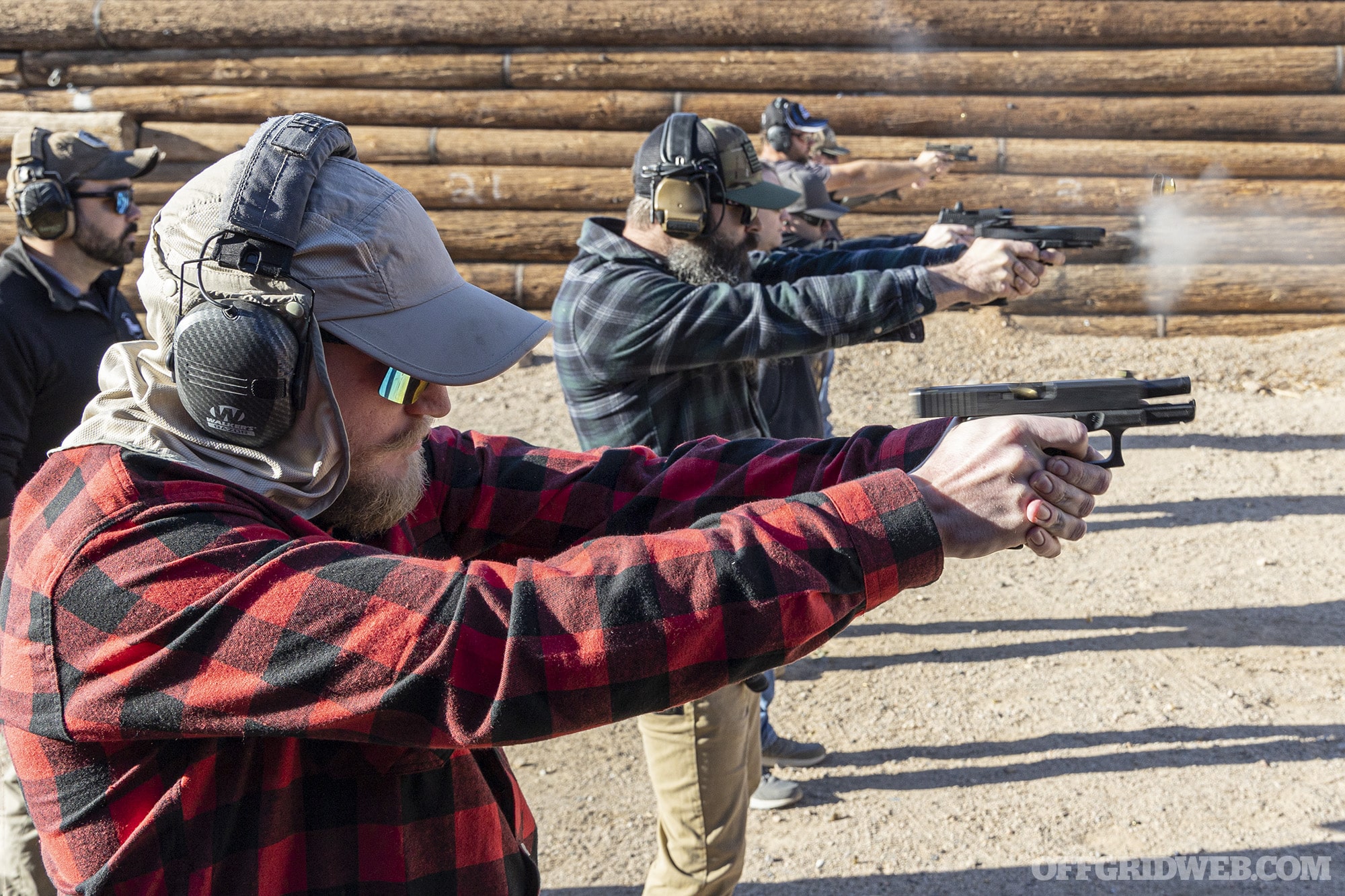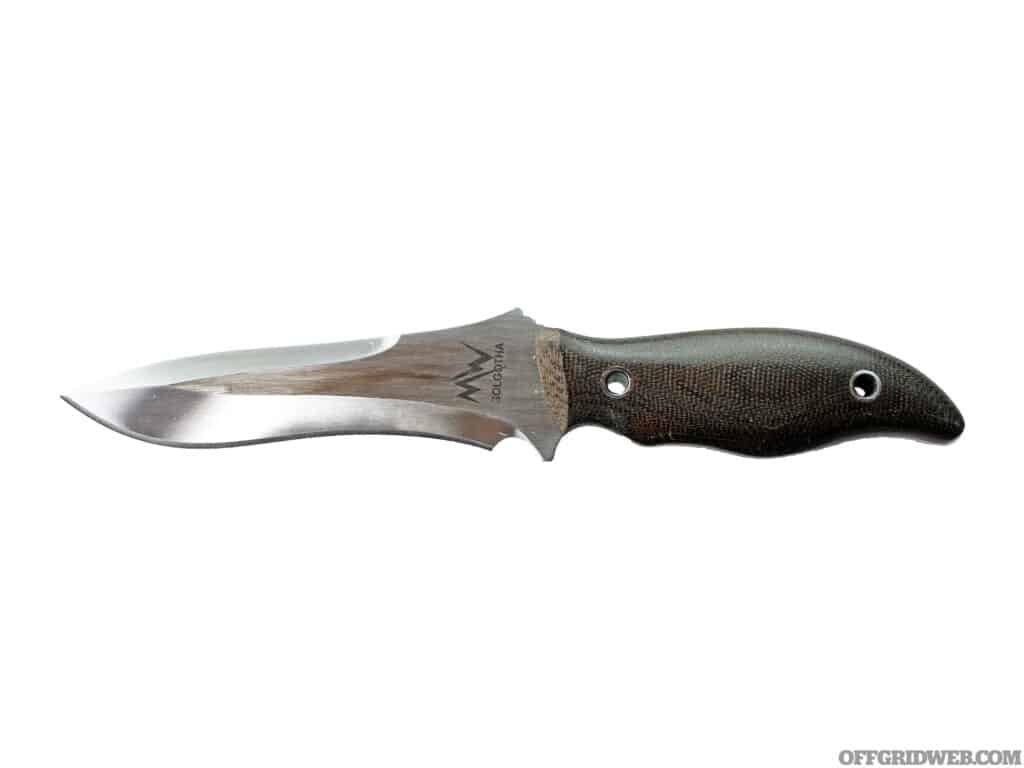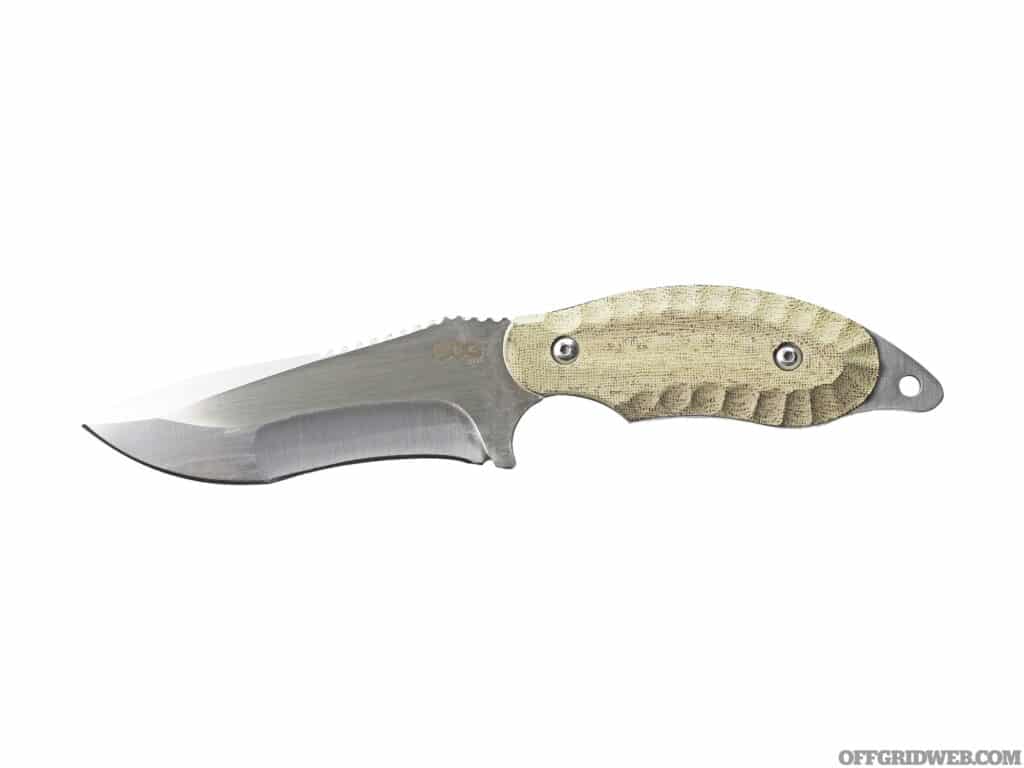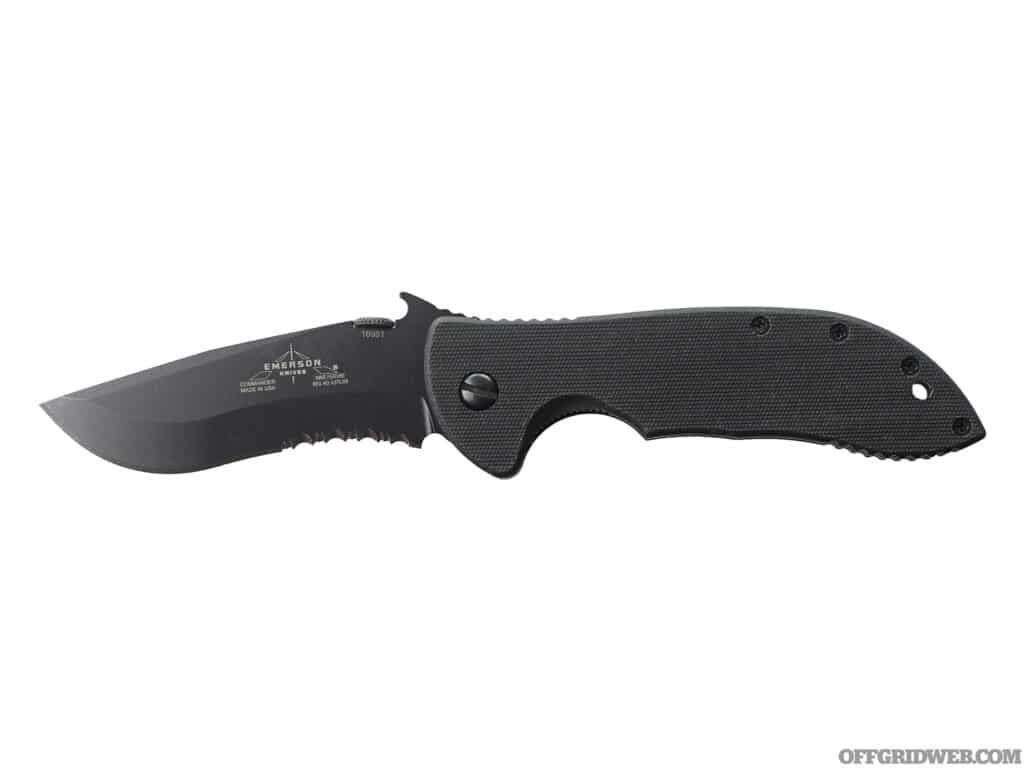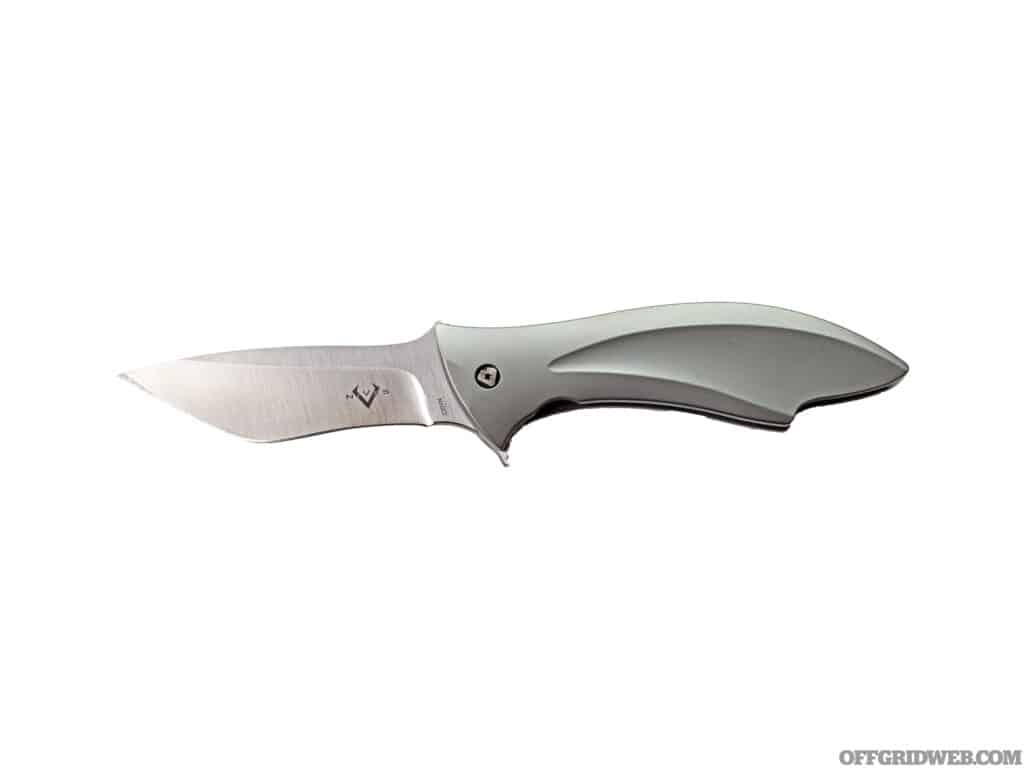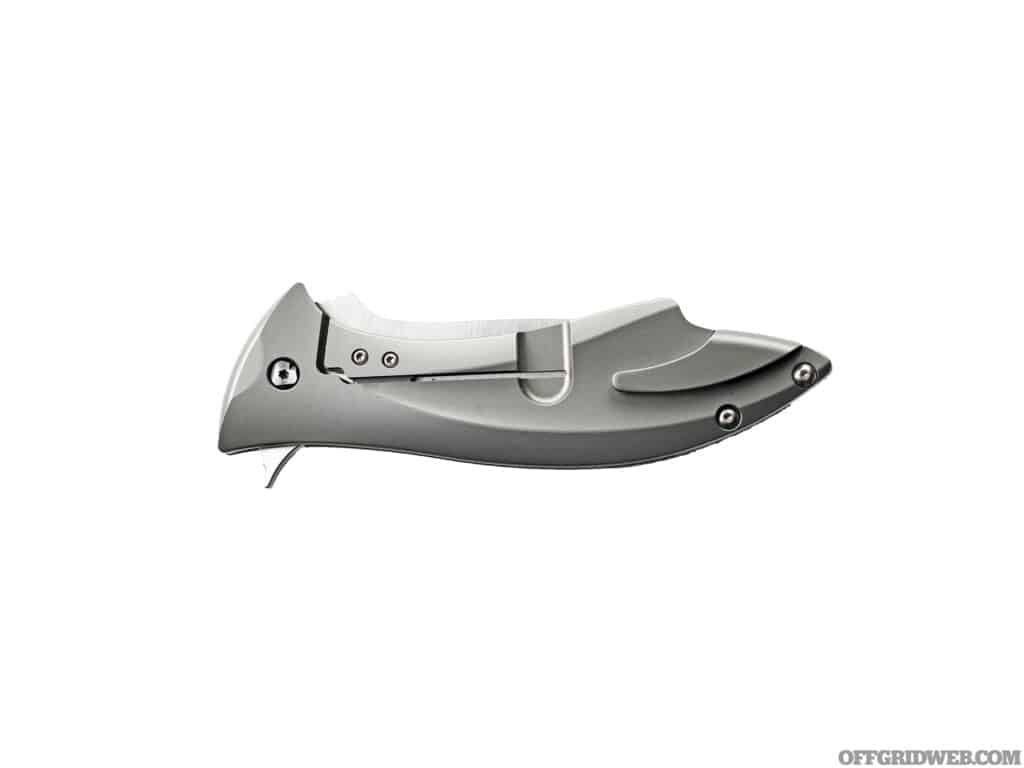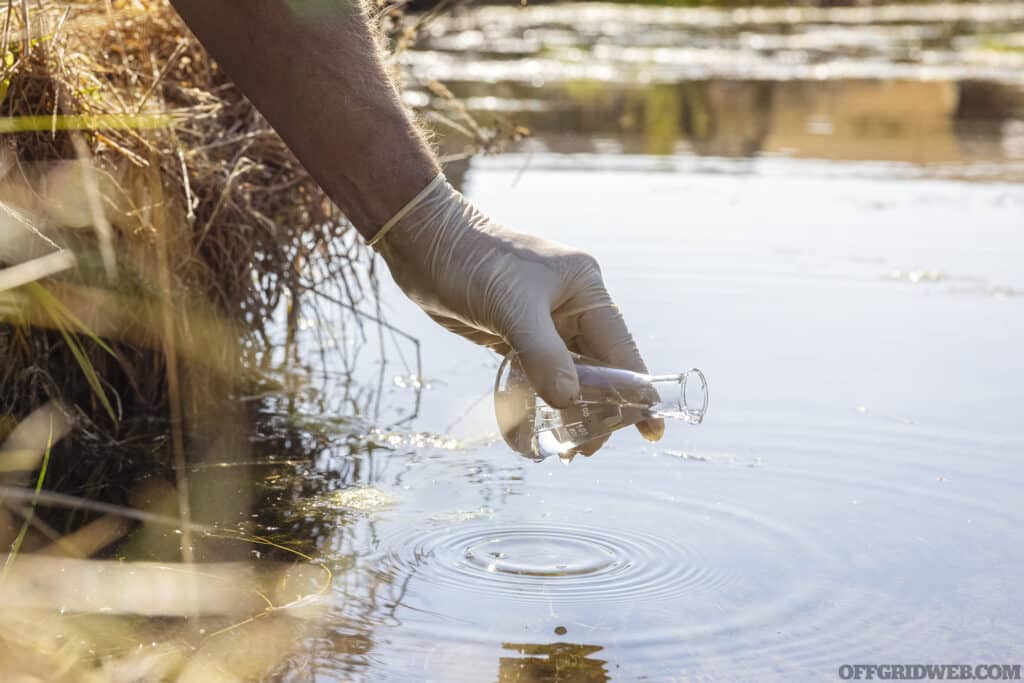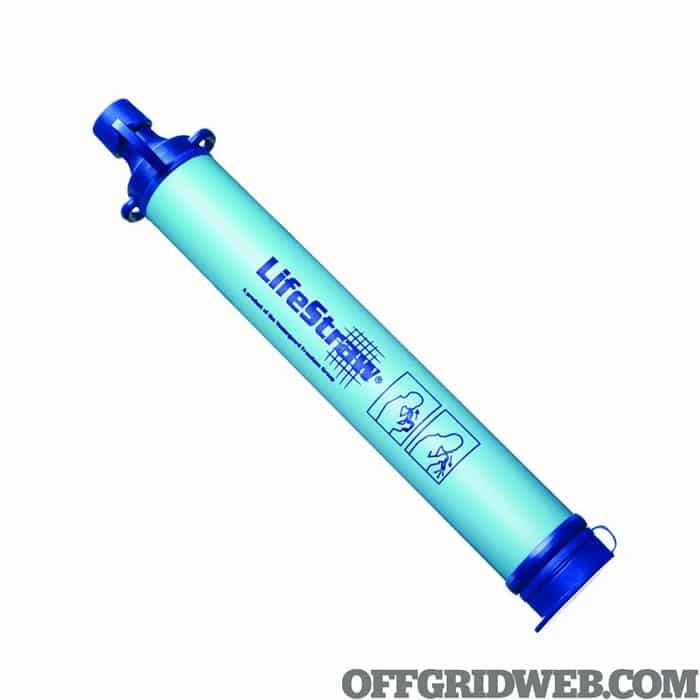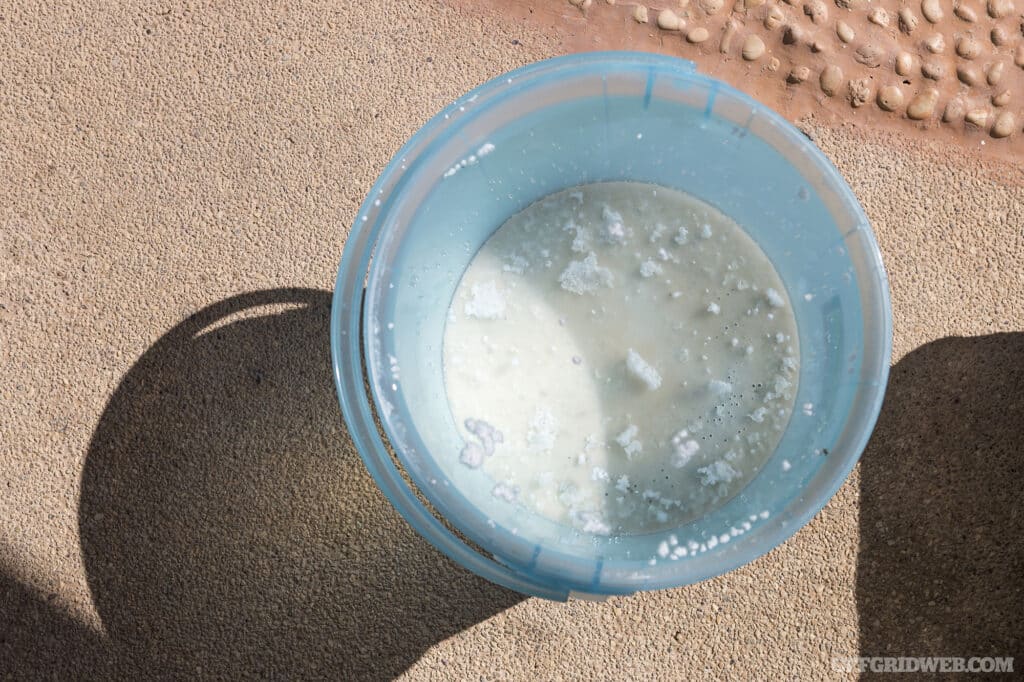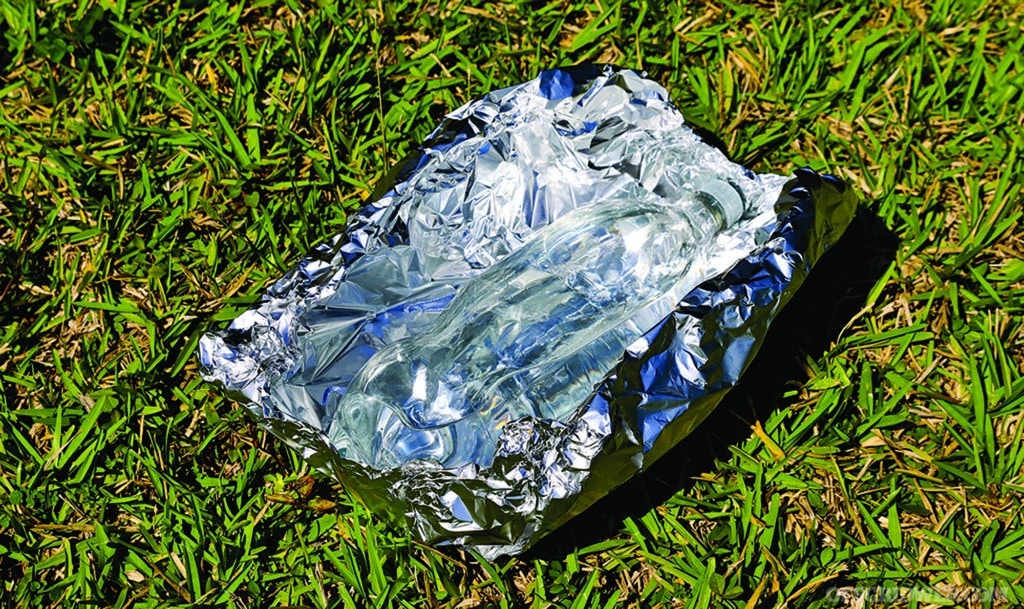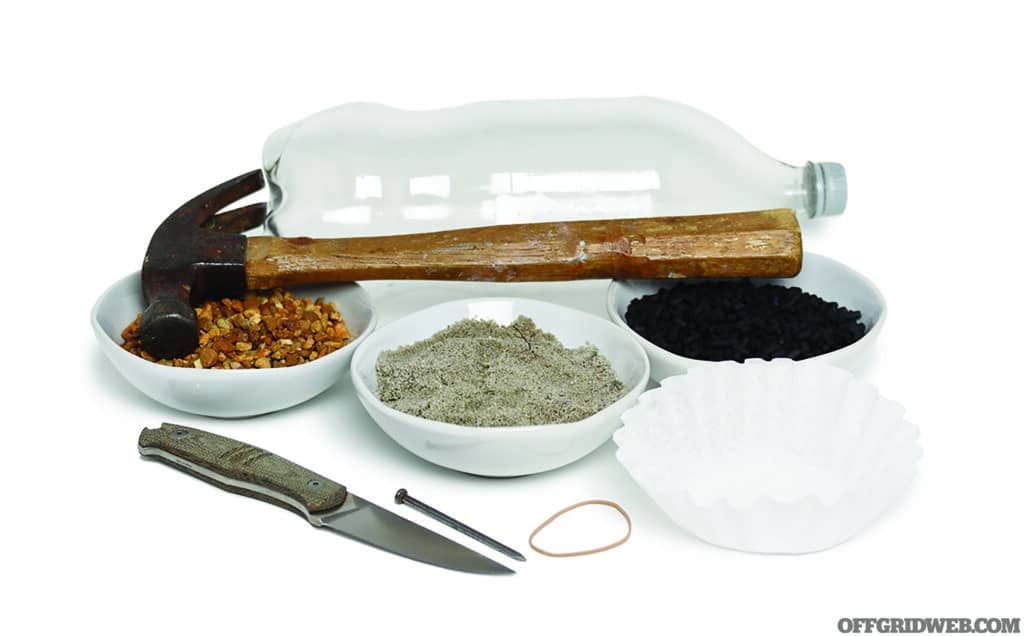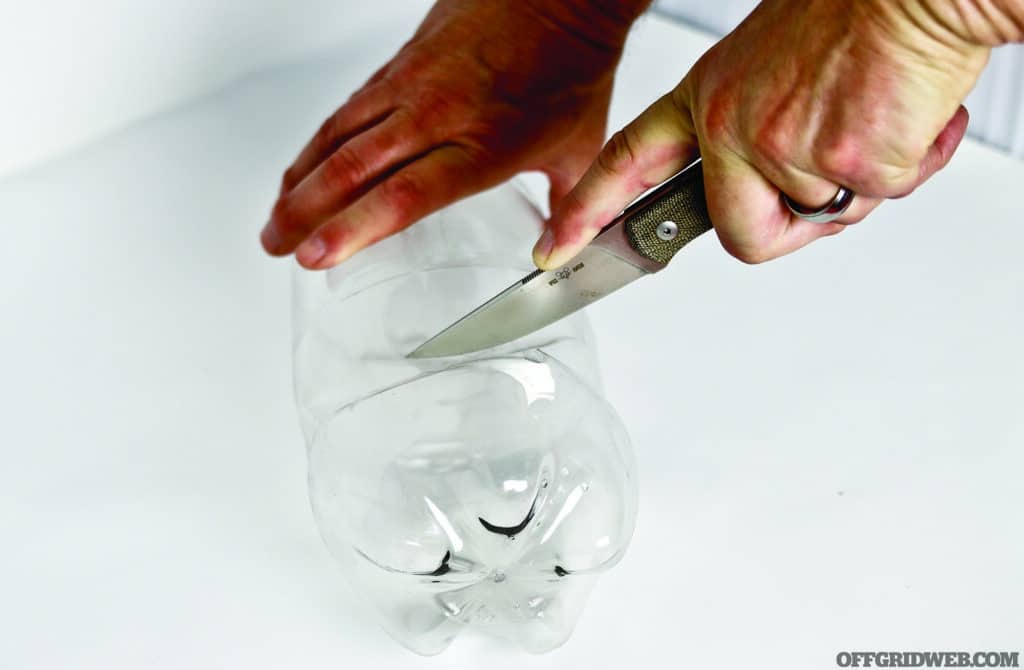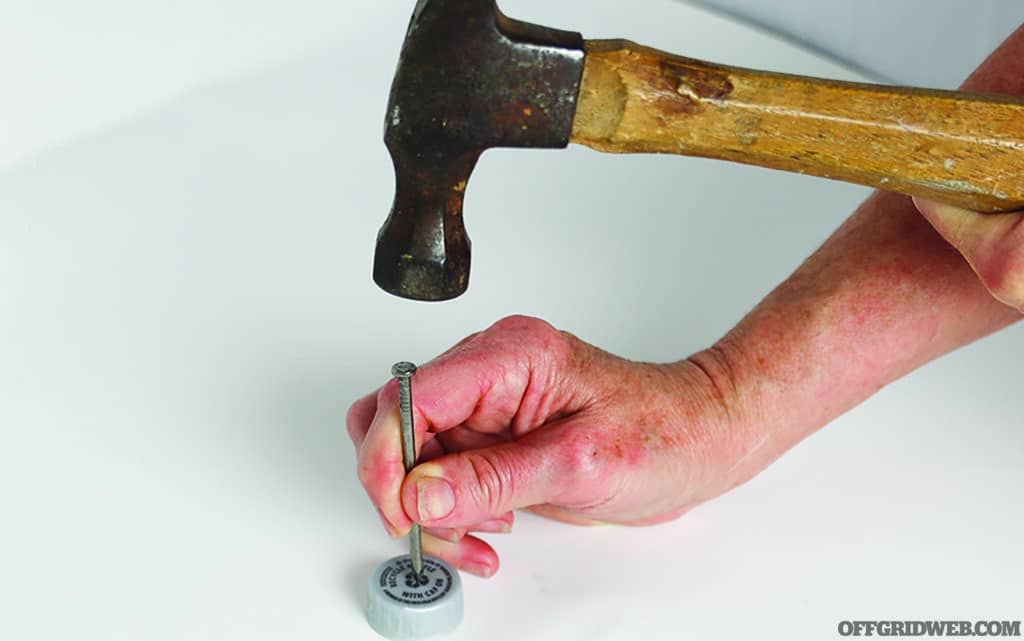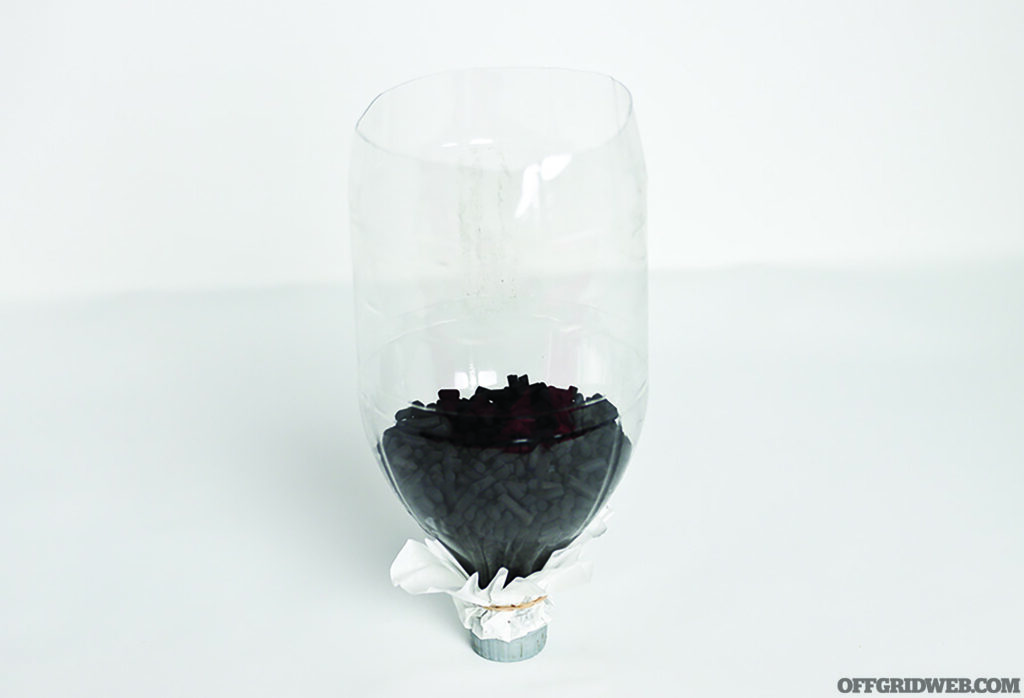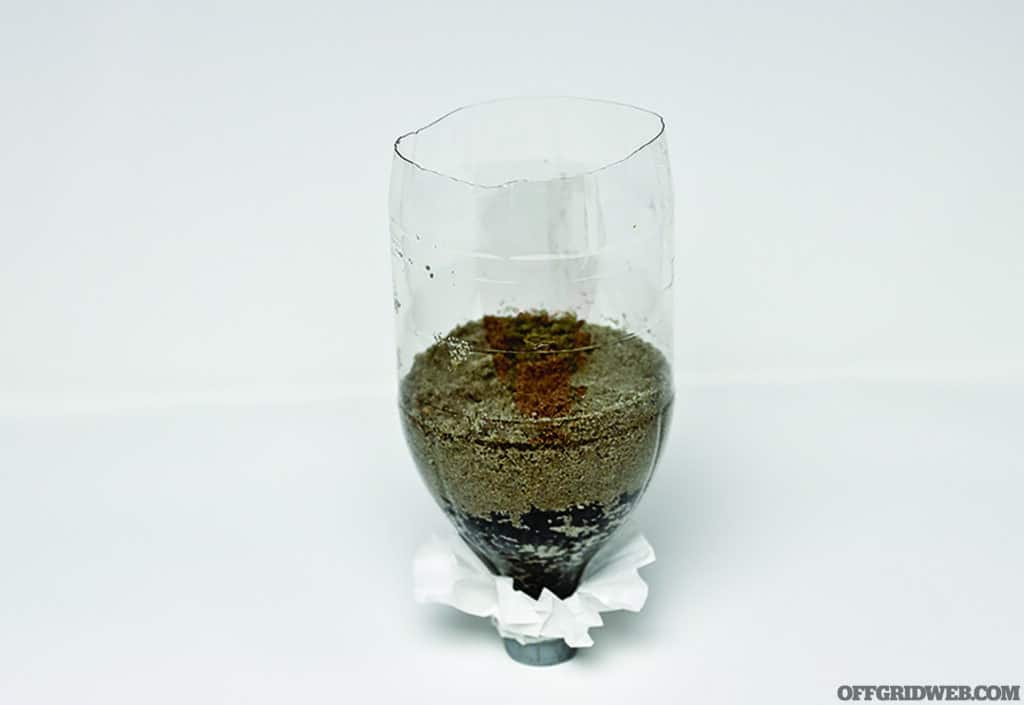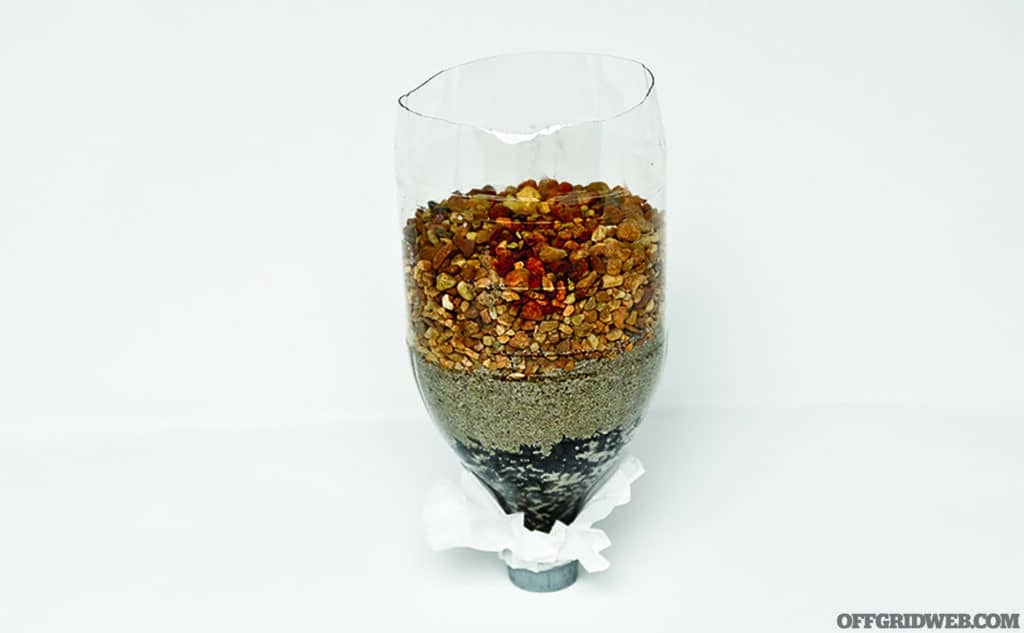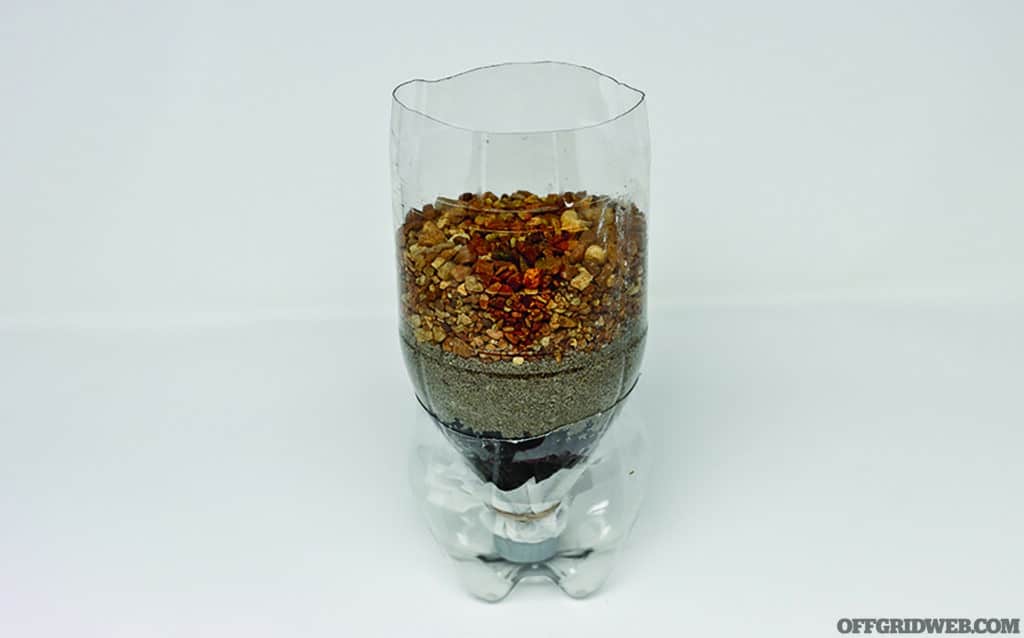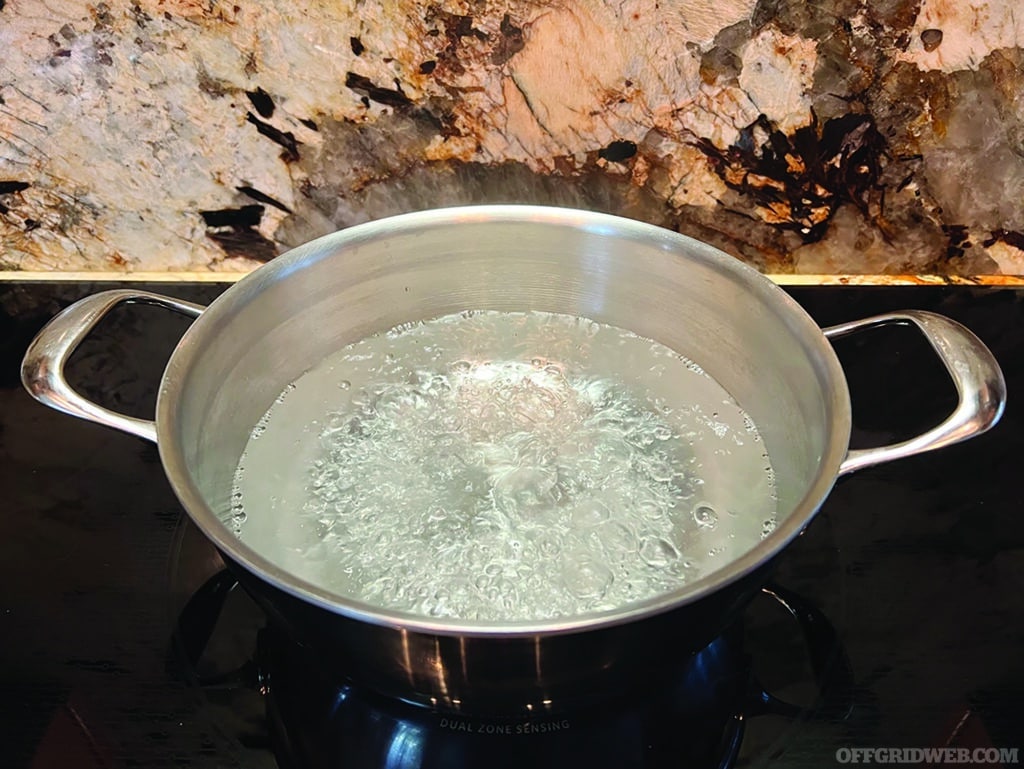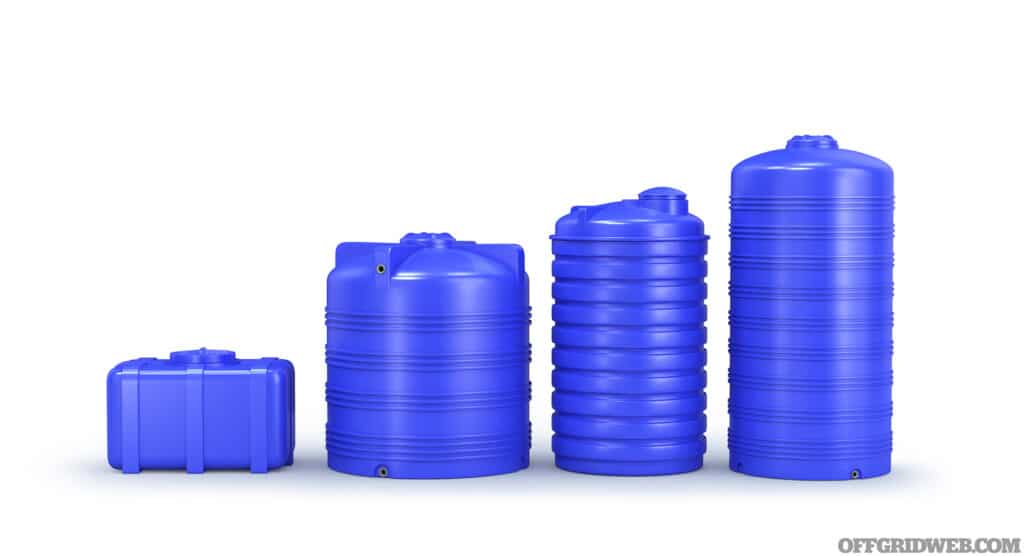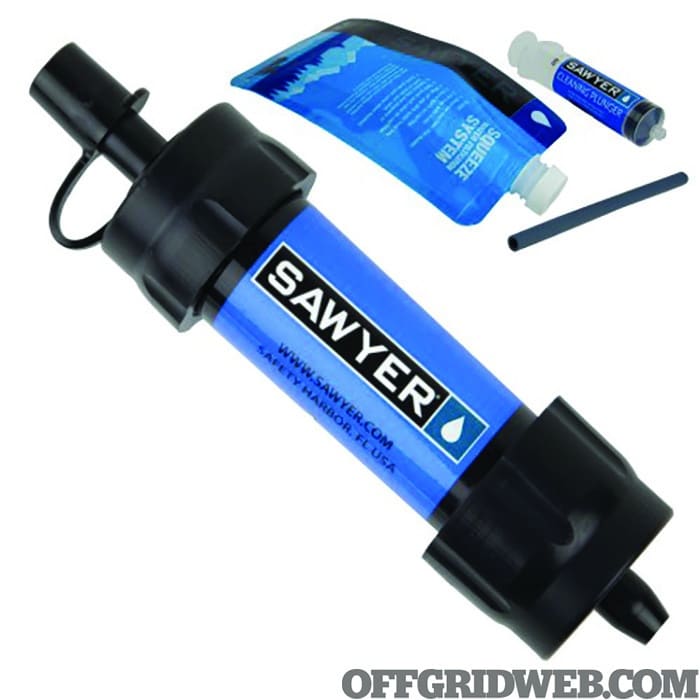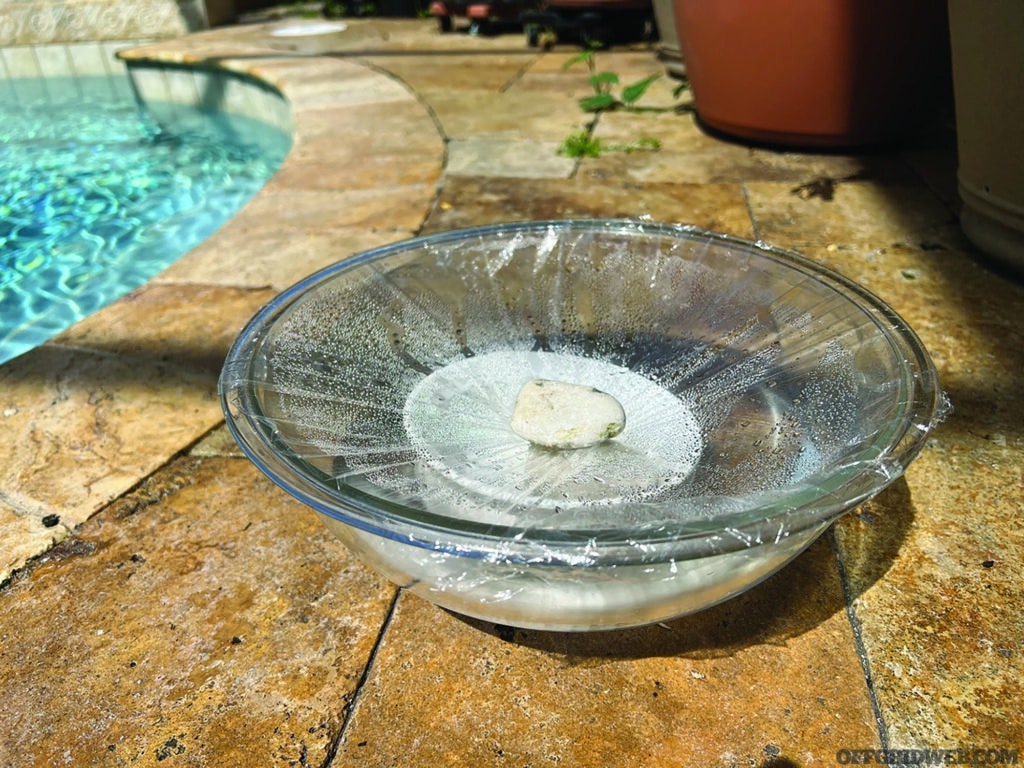In This Article
Three days have passed while you scuttled unseen from one abandoned apartment to the next. Every cupboard and pantry have long since been ransacked by those who came before you. As the country devolved into chaos and opposing gangs vied for control of portions of your city, you boarded up your dwelling and bugged-in, content with your weeks of prepared food and ammunition reserves. Then the food ran out, electricity turned off, sewers backed up, and fresh water ceased its flow from the tap. Only a brief rainstorm miraculously afforded you the chance to stave off dehydration for a little while longer. You feel cold and so exhausted that you struggle to summon the motivation to continue your search. If only you could find some source of nutrition to give you the energy needed to make it out of the concrete jungle and into an area where food sources might be more abundant. Digging through what's left of the books you haven't burned for fuel and warmth, you come across a resource about foraging for wild edibles, in other words, survival botany.
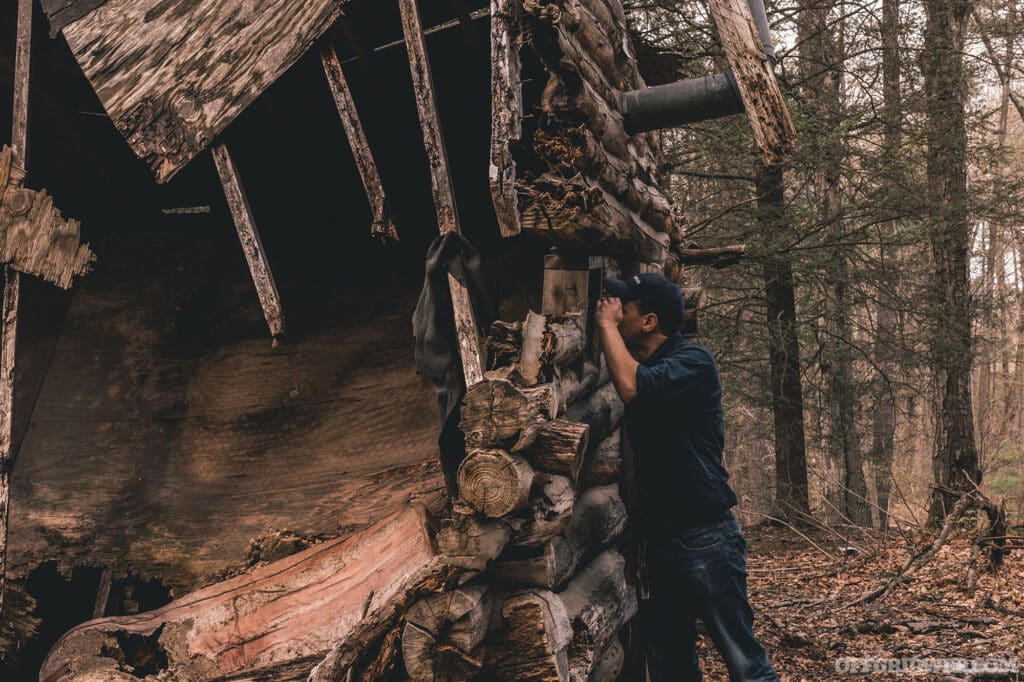
Above: Running out of food can make people desperate. Don't become one of the dangerous marauders hunting for their next meal, and learn what the land can provide. Photo by Craig Adderley
Survival and prepping resources are rife with articles about sources of food that can be found in the wild, but few, if any, outline sources that can be easily identified in both urban and rural areas, and in every region of the United States. Many wild edibles have similar species look-alikes which are poisonous, and it takes a little experience and practice to avoid poisoning yourself. But there are edible plants that are so easily recognizable, there is little chance of mistaking them for something else. Before you test your ability to forage from the land, take a moment to equip yourself with some knowledge that could spare you from potential digestive discomfort, starvation, or even death.
An Ounce of Prevention
As the old saying goes, “an ounce of prevention is worth a pound of cure.” This couldn’t be truer when it comes to foraging for wild edibles. When getting ready to forage, take the time to look up what species of wild plants are edible in the location specific to where you plan on going. Do a little research, take copies of the images of the plants with you, or find a published field guide to reference when you want to know what something is. No guessing allowed!
In North America, there are plants that can cause serious skin damage just by touching, and even some that a single bite could induce grand mal seizures and potentially death (I’m looking at you Water Hemlock). It’s vital to your existence that you take proper identification extremely seriously. A good rule of thumb is when in doubt, leave it alone. You might find that there are a few methods out there for testing toxicity orally, but I do not recommend using these methods under any circumstances, so practice these at your own peril.

Above: Plants, including the poisonous ones, can look different depend on where they are growing. This means learning to identify plants every time you move to a new area. Even areas that are close geographically.
Consider the location of the plant you are foraging. Is it growing along your backyard fence, or next to a stagnant pool of parking lot rainwater runoff? We have been told since we were young that we are what we eat and the same holds true for every organism. Plants not only absorb nutrients from the soil that they grow in, but they also absorb other chemicals which are present near their root structures. Steer clear of plants growing in potentially toxic environments or which may have been sprayed with herbicides or pesticides. If it looks unhealthy, it most likely is.
If, for any reason, you ingest or touch something poisonous, spit out what you can or wash the skin with soapy water, take a few sips of water and contact medical personnel immediately. Trying to induce vomiting can make matters worse because the acid in your stomach could expose the delicate tissue in your esophagus to the poison. Trying to experiment with foraging in a location where help is not easily reached could make for a dire situation if you become poisoned. No matter how hungry you may be, you must find the discipline to take your time and ensure you are not eating something potentially fatal.

Above: Nobody likes feeling sick, and foraging can lead to even worse end results. It's best to learn from someone who is experienced in harvesting the wild edibles in the area you are interested in.
All this talk about danger and poisoning may have cast a dark cloud on the idea of foraging, so let’s clear it up a bit. Being able to forage for food is like donning an armor of confidence. Whether your car breaks down somewhere remote, you get lost on a hike or you must bug out to somewhere safe, you won’t feel distraught about how much food you packed or where your next meal will come from. Not to mention, there are some delicious wild foods out there just waiting for you to enjoy. Some wild foods are even highly sought after by Michelin Star chefs!
What follows is a list of some of the wild edible plants that can be found in every state of the continental United States, as well as many other places in the northern hemisphere. Take some time to review the facts, and you will see how valuable a skill plant identification could be in a survival situation.
Dandelion
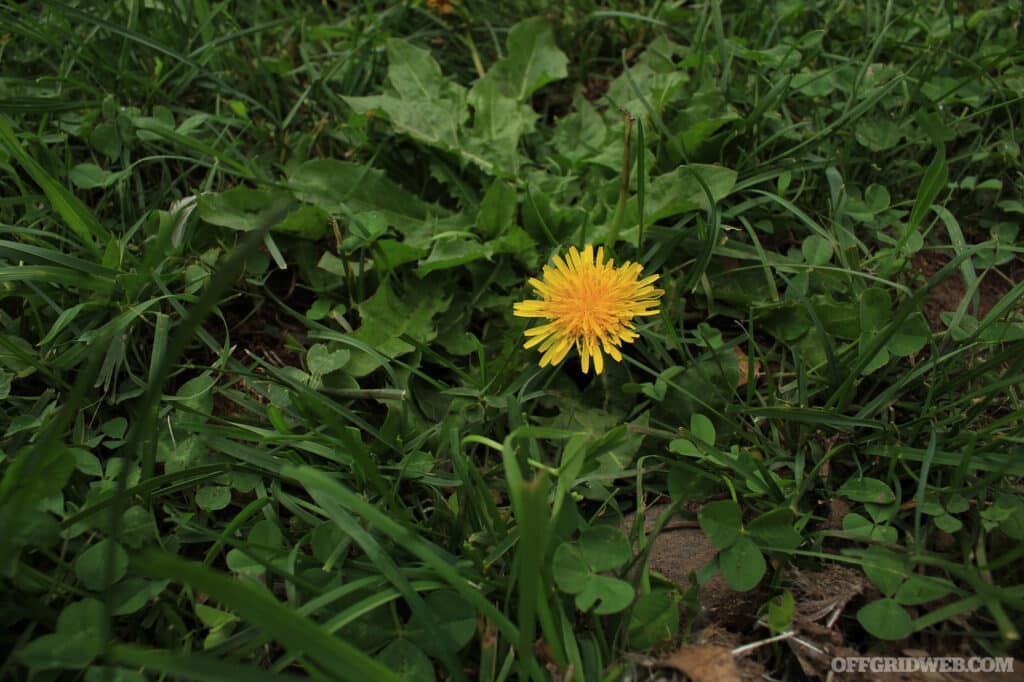
Above: Often thought of as a weed, a dandelion is incredibly versatile as a wild edible.
If you have looked up edible plants before, you have probably seen this on every list, and it is for good reason. Dandelion is one of the most abundant and easily recognizable wild edible plants on planet Earth and can be found on almost every continent. A single cup of their raw, distinctive green leaves is packed with nutrients, fiber, carbohydrates, and even a gram or two of protein. Every piece of this plant is useful in some way. Tea from the roots is similarly high in vitamins and antioxidants and is used as an anti-inflammatory. The flowers, while they are yellow are edible and used in tea, and even in making wine. You can find them growing in almost every lawn or crack in the pavement with moist soil below.
Acorns
This wild edible requires the most preparation out of all the others in this list, but it’s worth mentioning because there are hundreds of oak trees in the world, and all their seeds (acorns) are edible. Granted, some are more palatable than others, but if survival is the name of the game, knowing that acorns can be a source of nutrition could make all the difference. Preparing acorns is a little more involved than crushing them in your palm with the bottom of your revolver’s grip a la Rick Grimes in “The Walking Dead”.

Above: Many animals rely on acorns for food, so finding an oak tree may also lead to more hunting or trapping opportunities.
For starters, an easy way to check if they are suitable for consumption is to soak them in a container of water. Those that sink are good to go, while the ones that float may be insect infested or have gone bad and should be discarded. Once you have all the good acorns, you can crack them open with a rock or hammer exposing the inner seed. The next step is the most important. Every raw acorn has bitter tannins that can cause intestinal pain and should not be consumed raw. They need to be boiled until all the tannins have been removed. This may sound like a lot of work at first glance but, considering that the dried seeds can be ground in to flour for baking, its cooking applications make it worth the effort.
As the nuts are boiled, the water will darken as the tannins are leached from the seed. Keep replacing the water until the boiling acorn water remains clear. Some species, such as the Northern Red Oak, will remain bitter no matter how much you boil them, and others will be ready to eat after their first hot water bath. Acorns are high in nutrients and are packed with carbs, more so than the other wild edibles on this list.
Clover

Above: Clovers are easy to identify, and grow in many regions of North America.
Purple flowers, honeybees and St. Patrick’s Day are all iconic of this well-known plant. What is little known by those outside of agriculture is that it is a great source of protein and vitamins, can be eaten raw or cooked and is found nearly anywhere there’s an open patch of grass. Once the plant flowers, the leaves tend to be slightly bitter, but are still edible. The easily recognizable purple flowers have a honey-like sweetness and are sometimes used in salads, cooking recipes or just eaten raw.
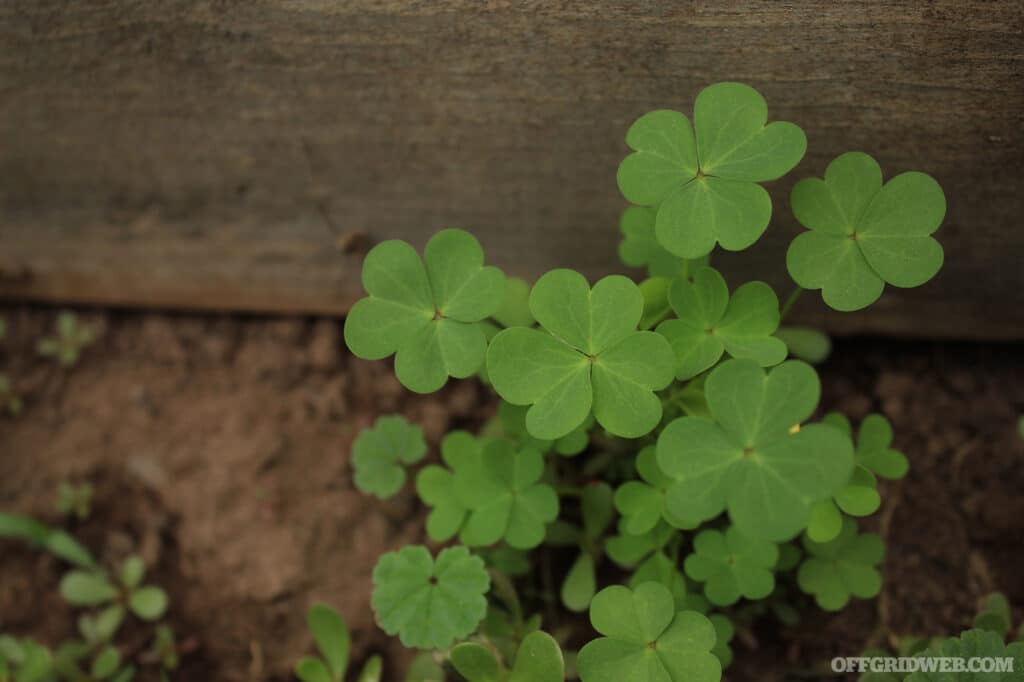
Above: Thanks to popular holidays, the distinguishing features of a clover leaf are almost universally recognized.
Thistle
It’s difficult to mistake this species, and you may have even encountered the spiky fortifications of the thistle. This wild edible almost did not make the list because of its prickly defense; however, it’s so abundant and surprisingly edible, that it makes the perfect survival food candidate. Its ability to grow prolifically in harsh conditions is another reason to remember this plant in an emergency. There are many species, they all look similar, and they are all edible. The best time to harvest them is during early summer or early fall when the nutrients are concentrated more in the base of the stem or roots, but it will remain edible throughout the entire growing season.
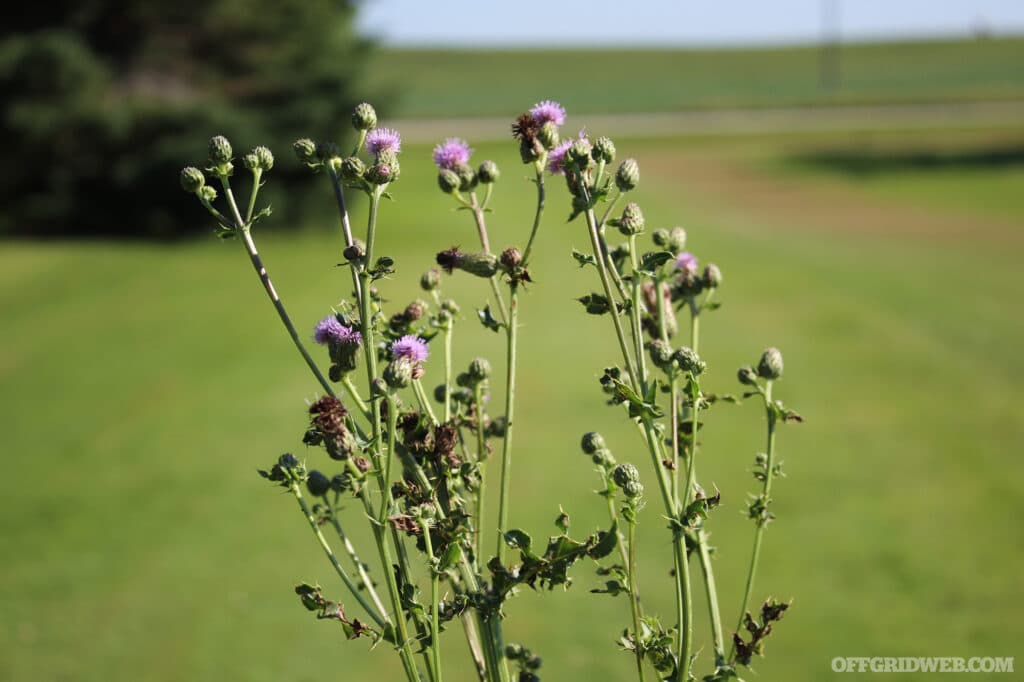
Above: The flowers of this petal are a little too small to create a meaningful meal, but the roots and leaves will provide a good source of nutrition.
If you come prepared with thick gloves or something to wrap your hands with, and a sharp knife, harvesting a thistle will reward you with a meal that is higher in fiber, protein, and other nutrients. The stems and thick midribs of the leaves can be stripped of their thorns, exposing the pale stalks underneath, and eaten raw or cooked. Since they are a cousin of the artichoke, the unopened petals of particularly large thistle flowers can be prepared and eaten in a similar manner.
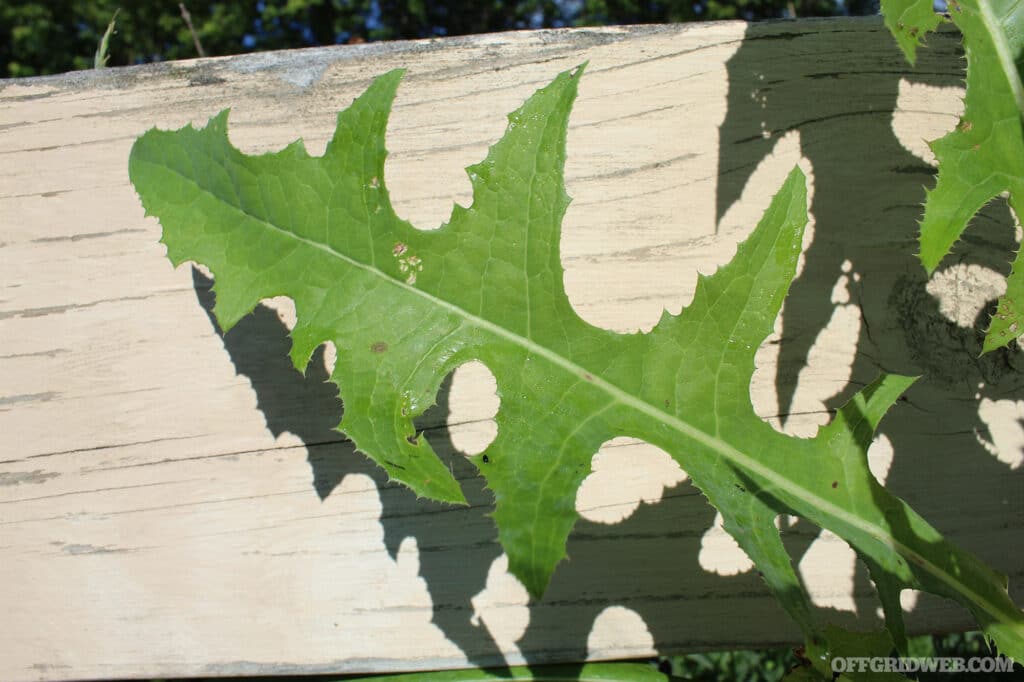
Above: Notice the thick midrib of this leaf. Carefully separating the meatiest part from the rest of the leaf will provide a great source of food.
Cattail
Since cattail grows near the edges of fresh water sources, it’s not only a potential food source, but is also an indicator of where potable water might be found. Cattails make the list because it’s so easy to recognize and have been used as a food source for at least 30,000 years. The young shoots are edible, the pollen can be used a flour substitute and the roots are high in carbohydrates.
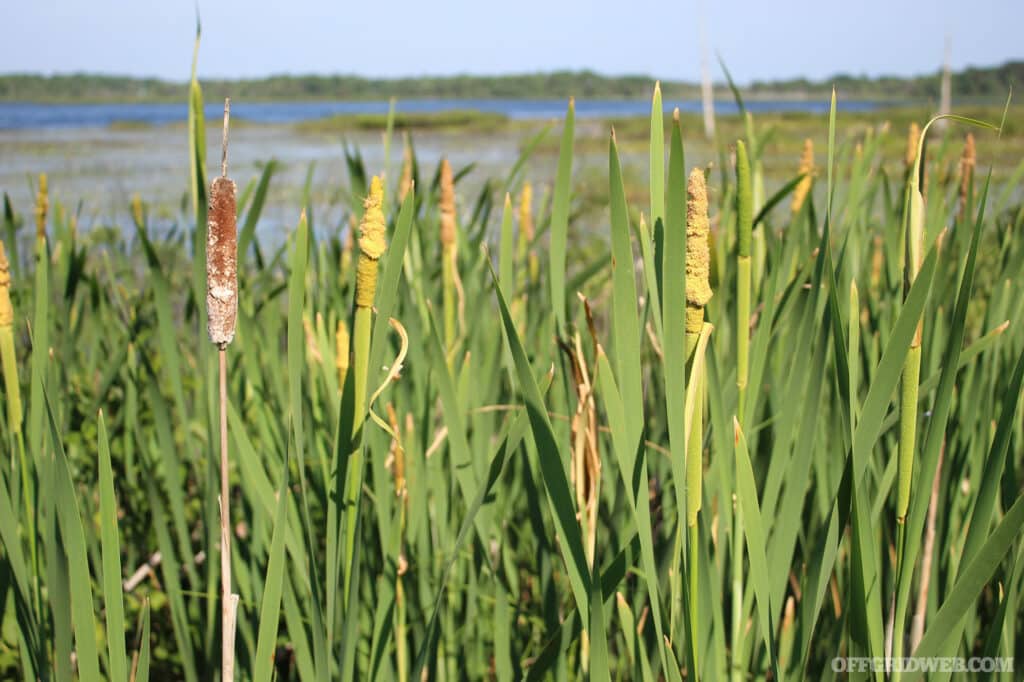
Above: The brown colored cattails are older, and useful as a source of tinder. The cattails that look yellow are fresh, and the pollen can be used in several forms of wild edible cuisine.
These plants are also just as functional as they are edible. Cordage can be woven from strips of their long leaves, and the leaves themselves can be woven into vessels for carrying things or even made in to mats or furniture. There are a few downsides to this useful plant. They grow exclusively in low-lying wet areas, so if you find yourself in an arid region, you will have to find something else to eat. And a word of caution: cattails are natural filters, and if the water source they are growing next to is polluted, consuming them could make your survival situation worse.
Purslane

Above: Purslane is also drought resistant, making it a great source of nutrition during long dry spells.
Bane to backyard gardeners everywhere, purslane is a succulent that creeps across the soil and threatens to over grow newly planted seeds. Unbeknownst to many is that this plant is not only edible, its delicious raw and has a taste similar to sweet peas. It’s a good source of vitamin A, C, and slew of other nutrients. As it ages and flowers, the taste can become more bitter, but is still edible. It’s a good idea to rinse them off before eating because rainwater can splash soil particles on to the leaves that grow so close to the ground.
Harvesting
Every species on the list, with the exception of thistle, can be harvested with your bare hands. Having a dedicated root knife will your make harvesting efforts less strenuous and will spare your pocketknife from being dulled if you are trying to dig up a stubborn plant. Bringing along a breathable container to keep them in as you harvest would be beneficial, but you can always improvise a vessel should you need one. Your individual scenario will dictate how you collect and consume wild edibles. As with most plants, boiling or blanching them will give you the most nutritional content. If you are wanting to save them for later and you have the ability, drying the plants, either with a dedicated dehydrator or in the sun will preserve your find for months, if not longer.

Above: Not every wild edible plant will be easy to pick like berries or other fruits. Come prepared to deal with thorns and prickles.P hoto by Marlene Leppänen.
Stacking the Odds In Your Favor
Three days have passed while you scuttled unseen from one abandoned apartment to the next. Every cupboard and pantry have long since been ransacked by those who came before you. But despite the potentially bleak circumstances and the occasional stomach growls, you feel like you have enough energy to continue on your journey. The edible plants you forage as you make your way out of the city have enough water content to keep you hydrated, carbohydrates to keep you energized and vitamins and minerals to keep you healthy. While others grow desperate or give up, you and your loved ones confidently make your way to your destination, all thanks to a little foraging knowledge.

Above: Learning about what wild foods can be harvested for sustenance before a disaster strike will boost confidence and keep morale up for you and your loved ones. Photo by Michael Burrows.

